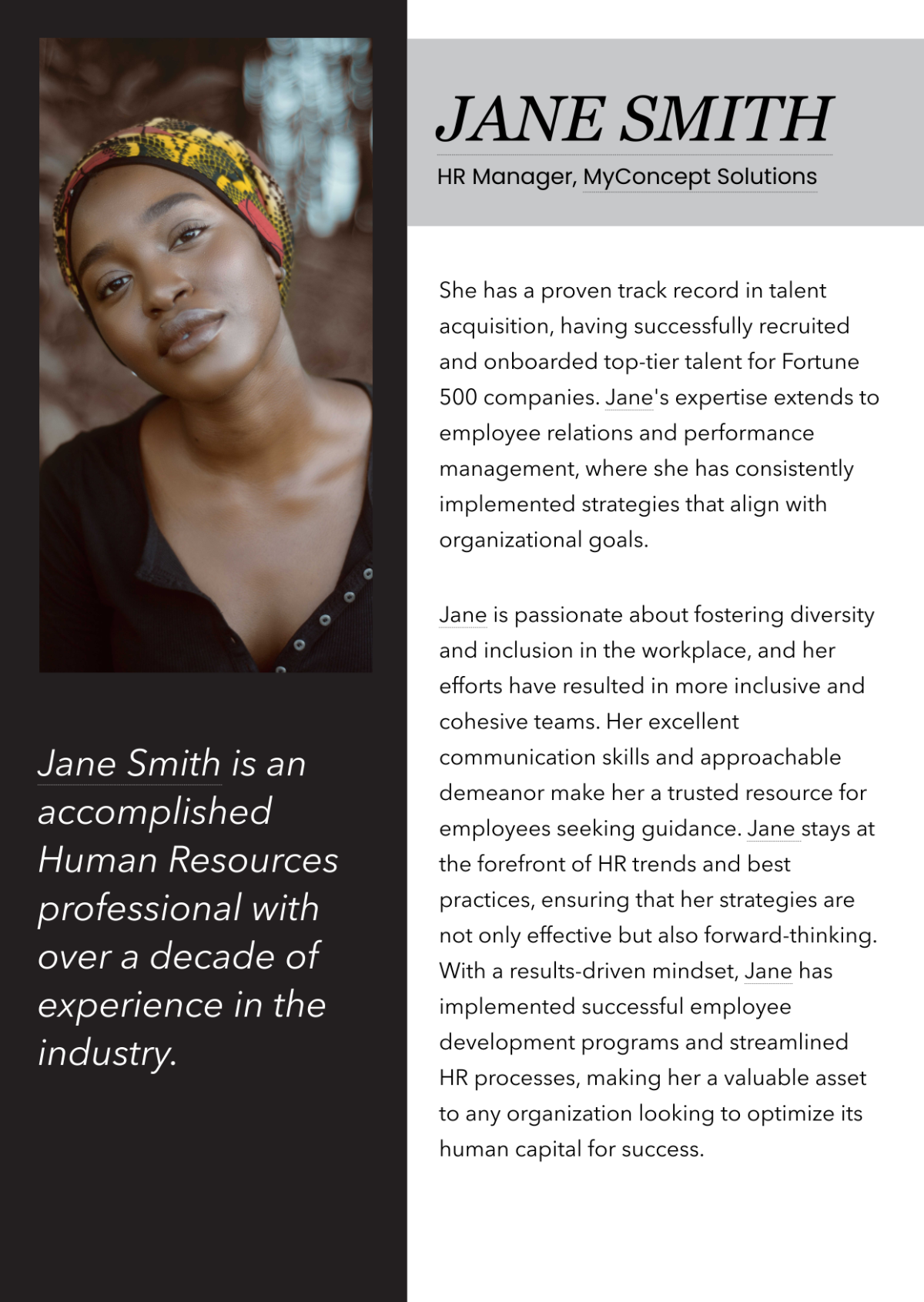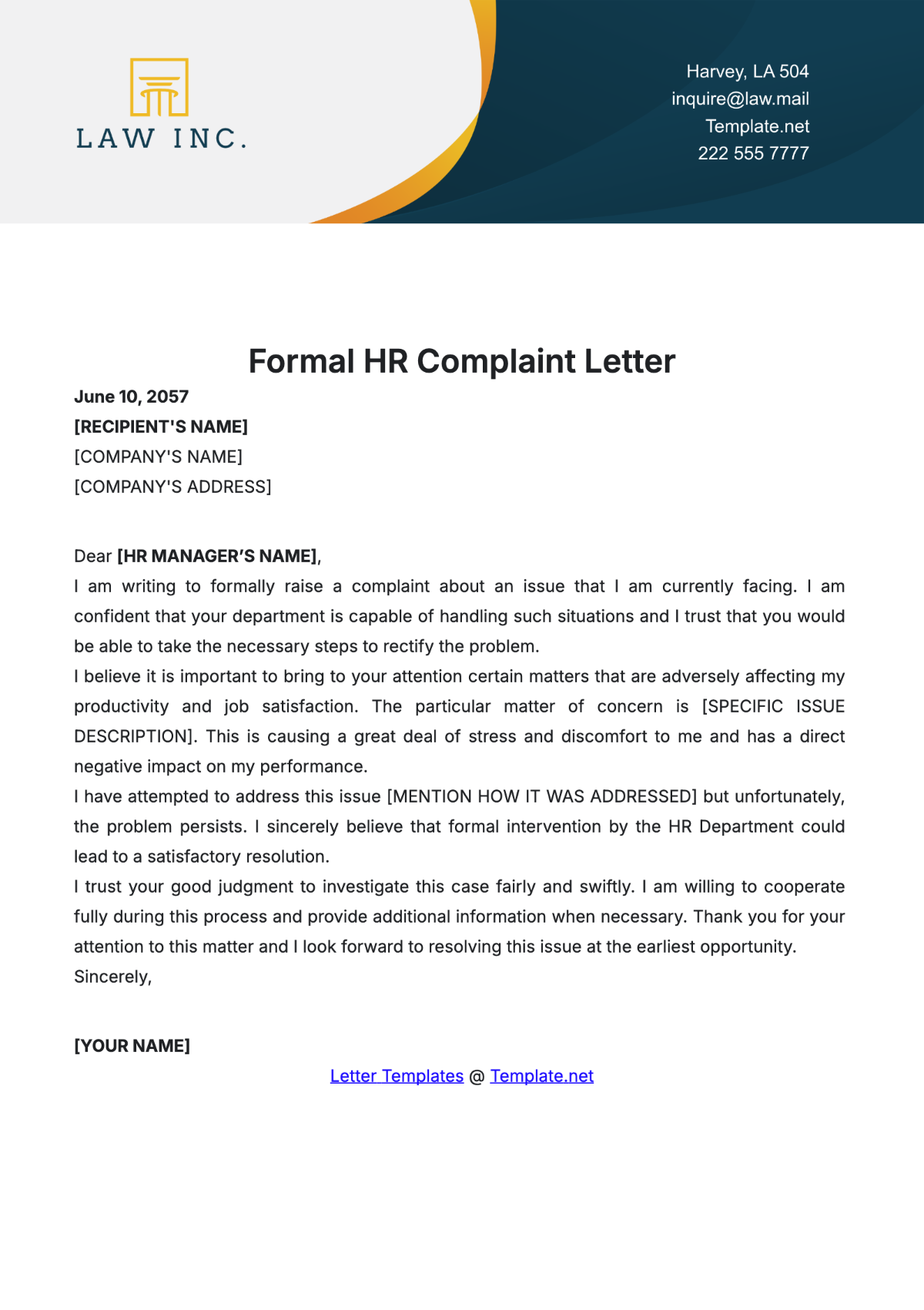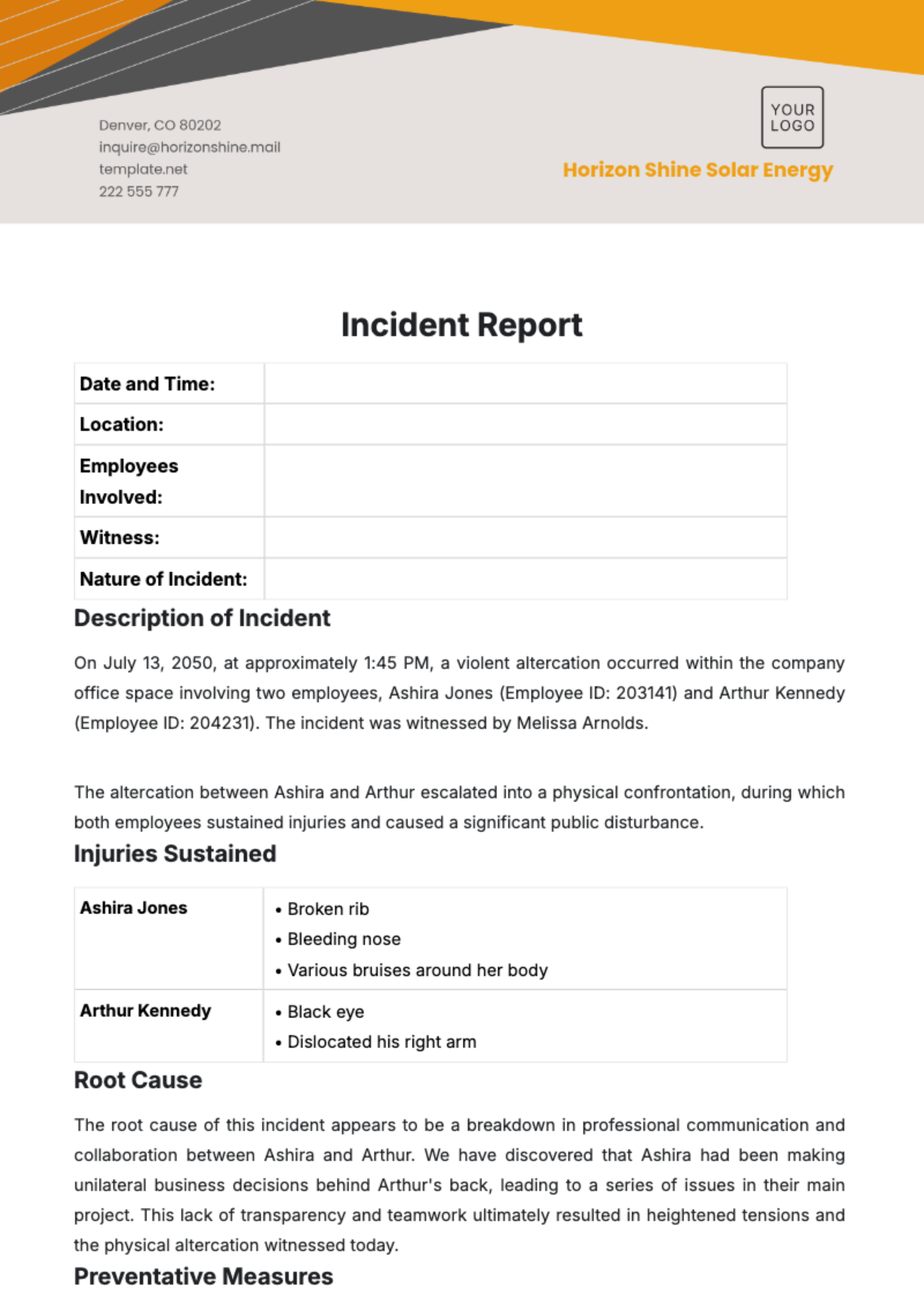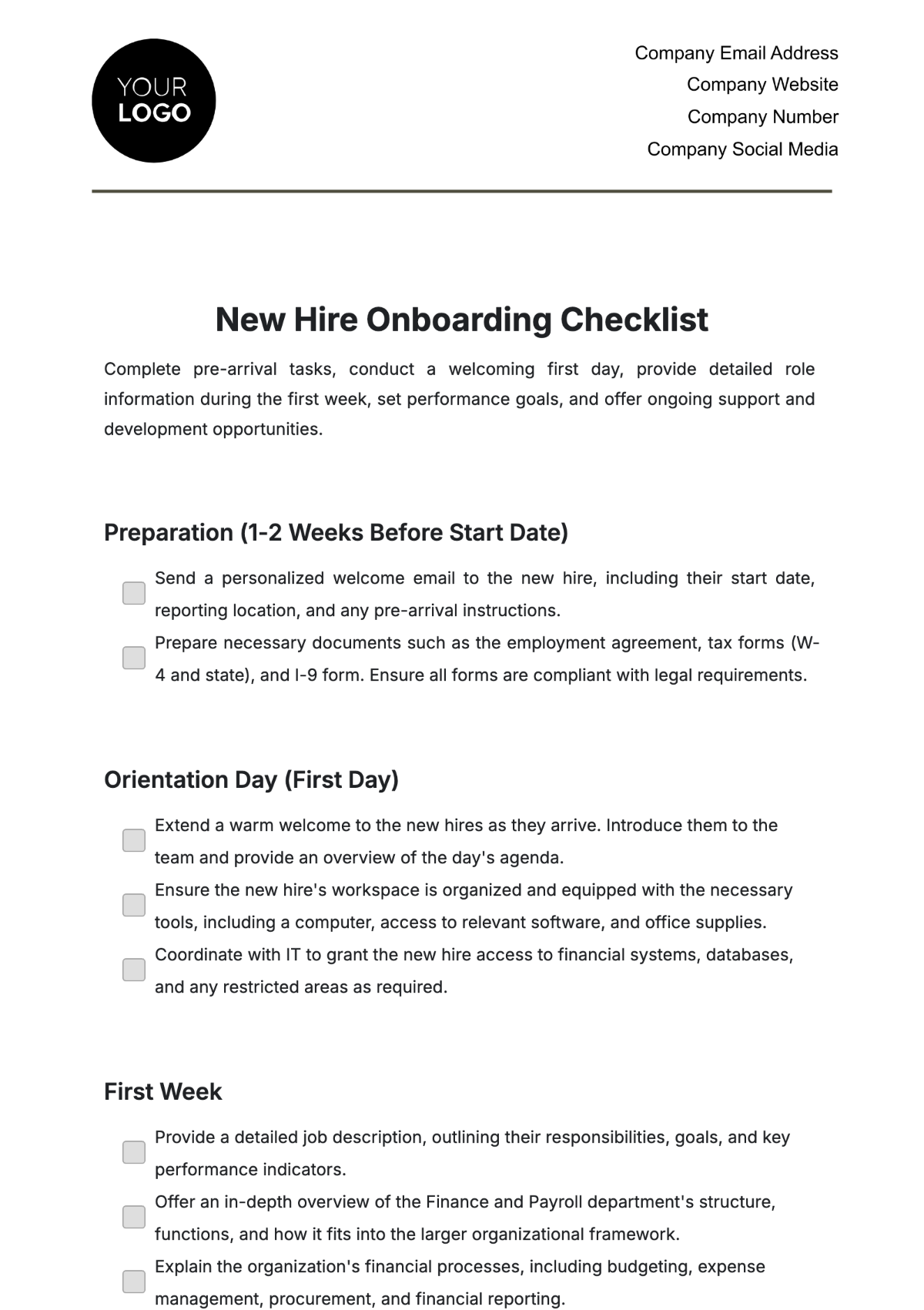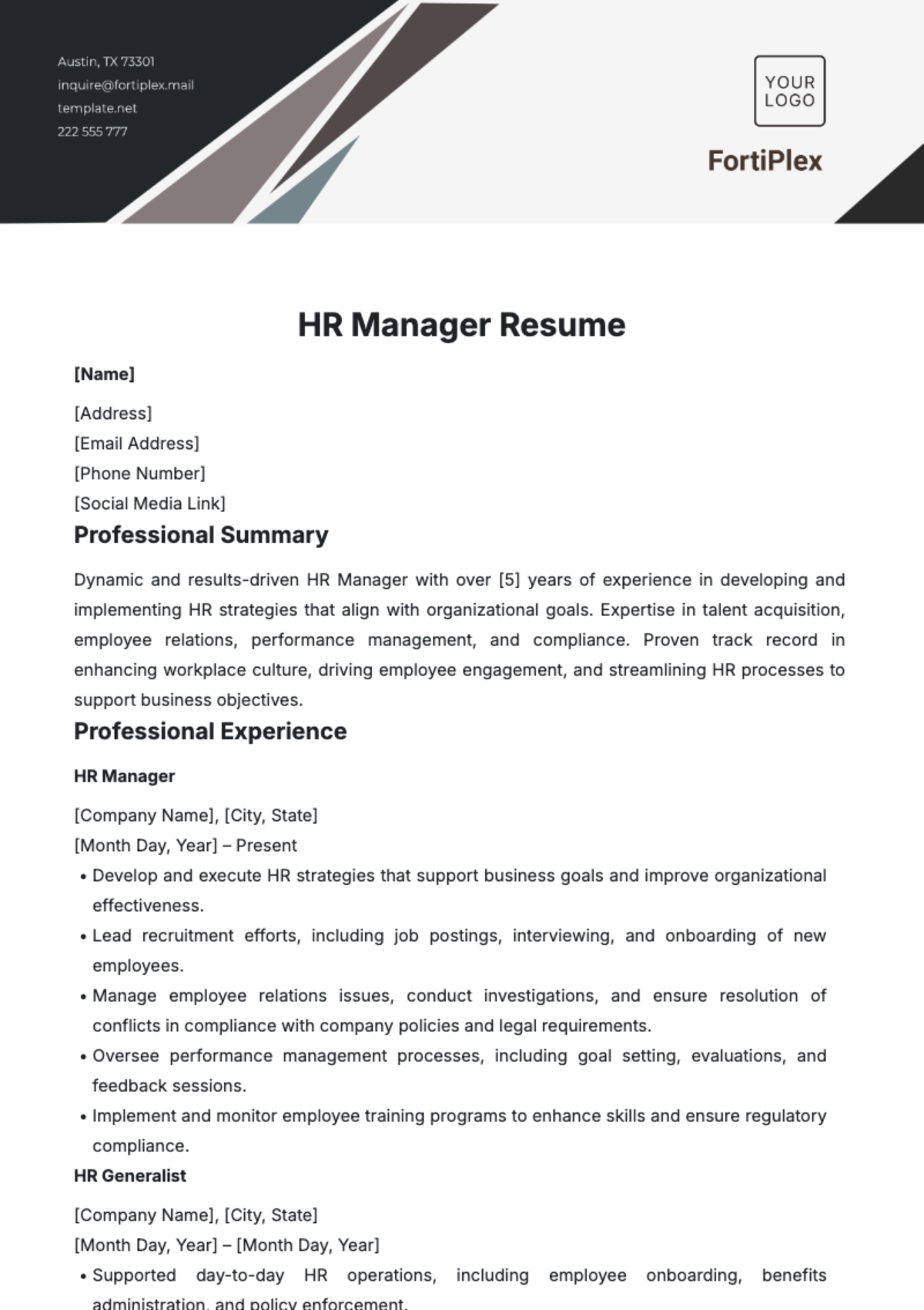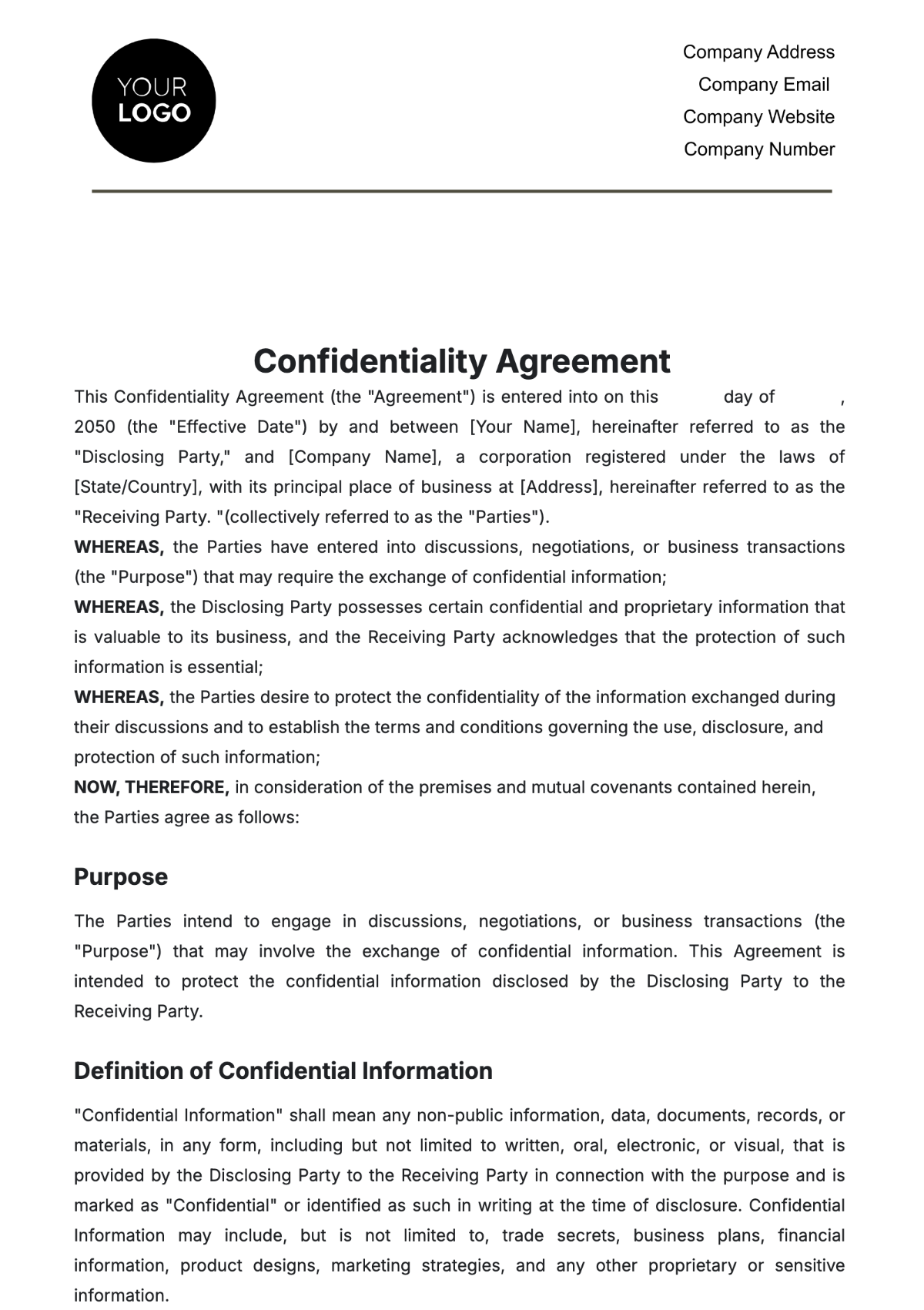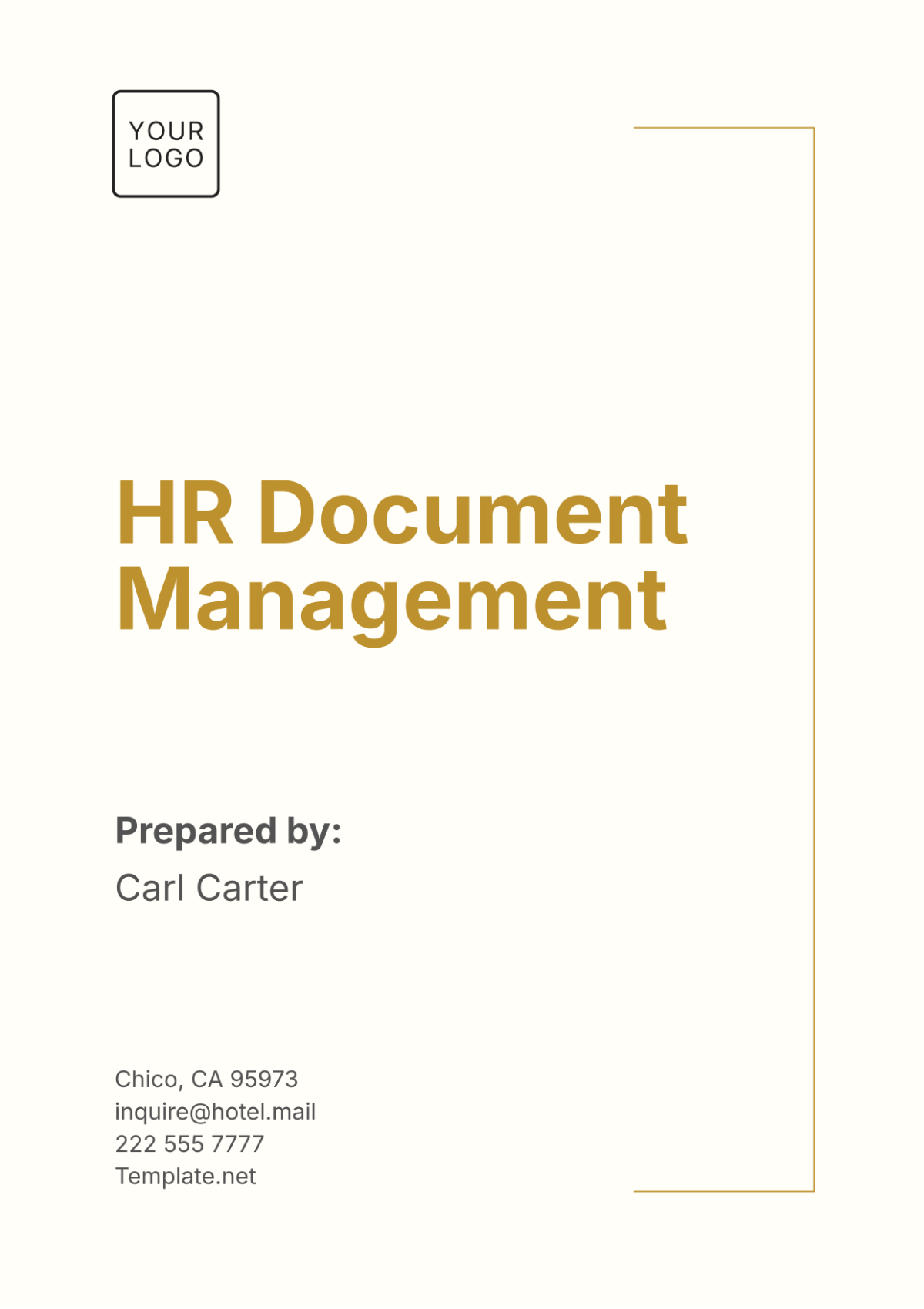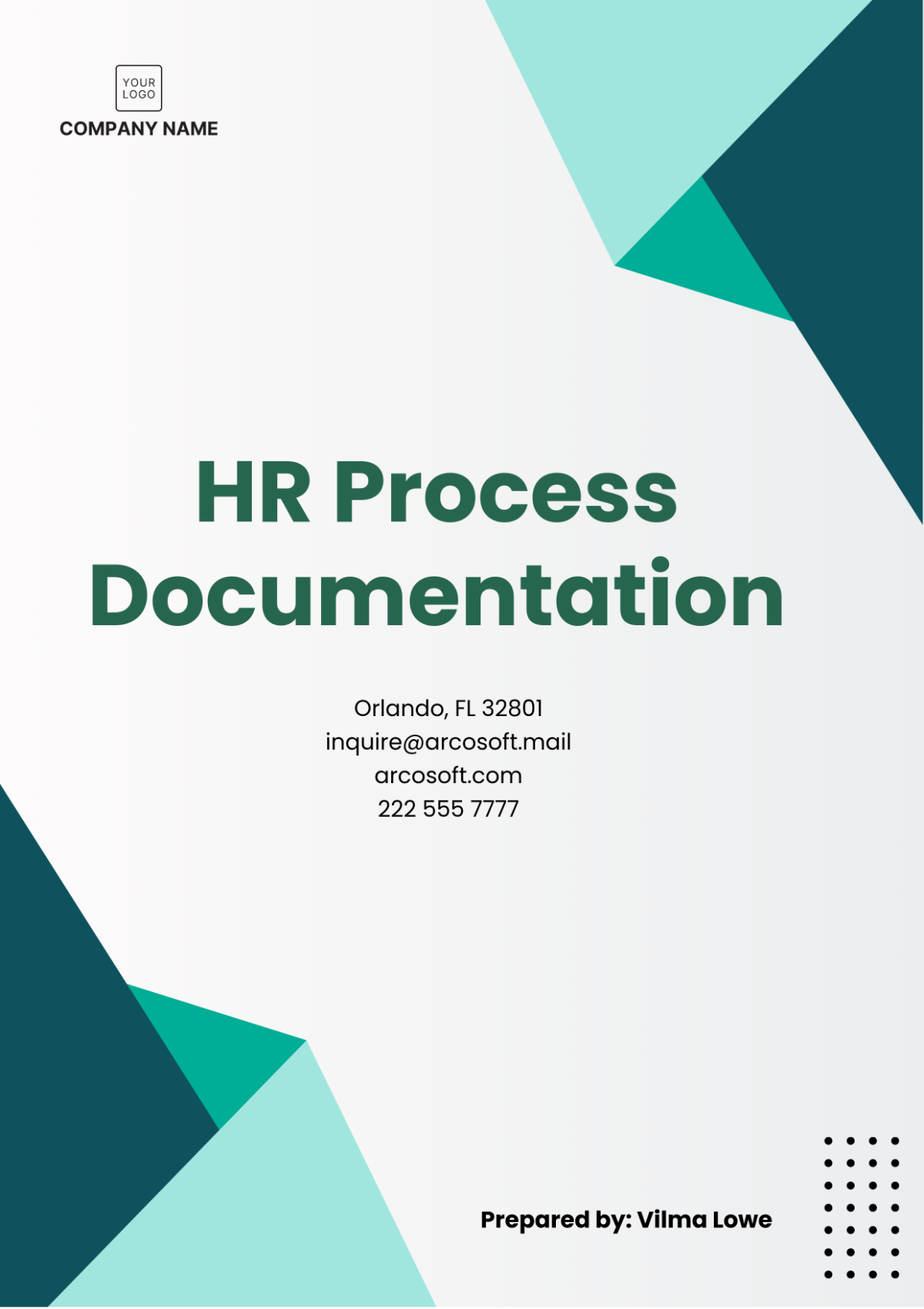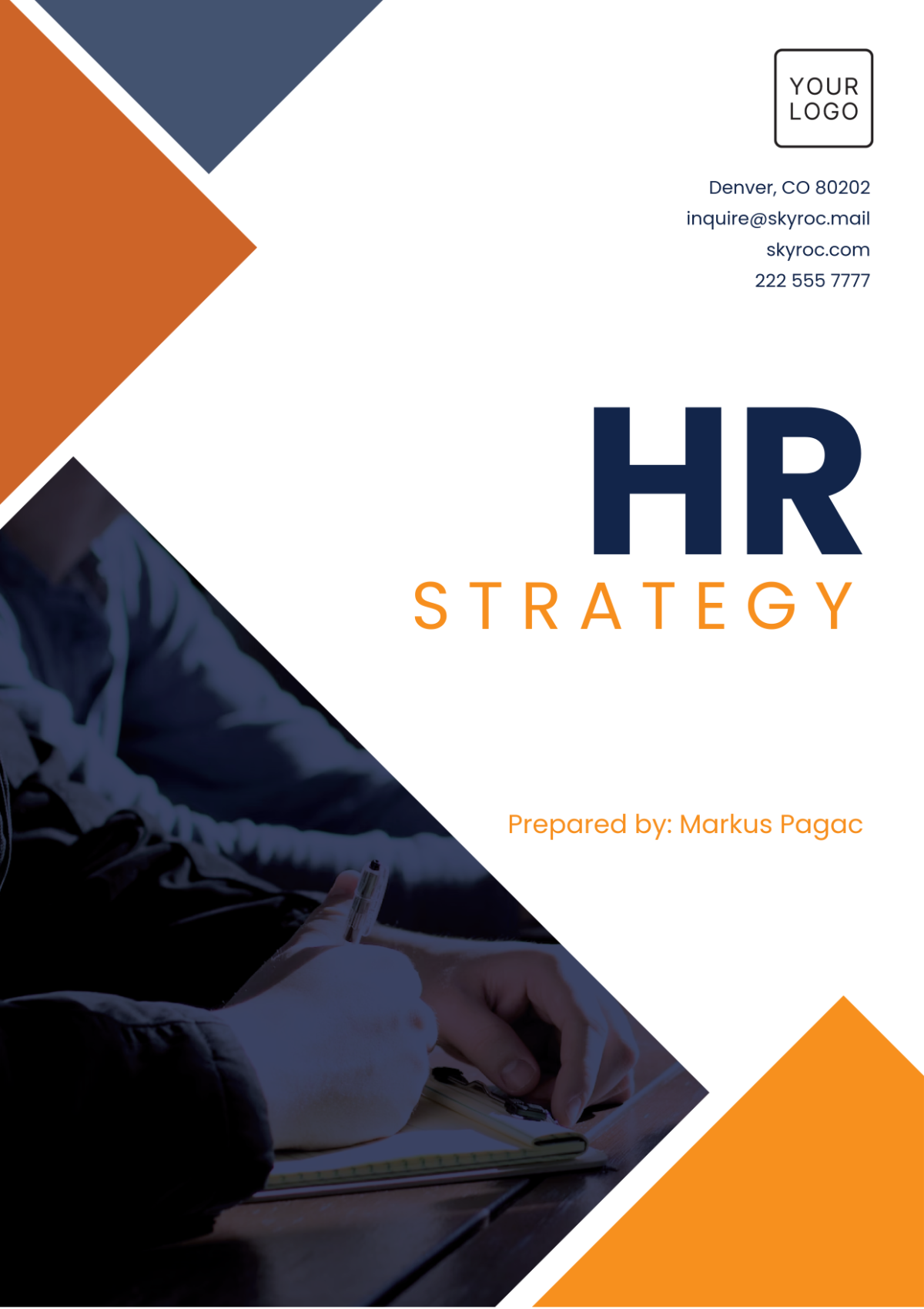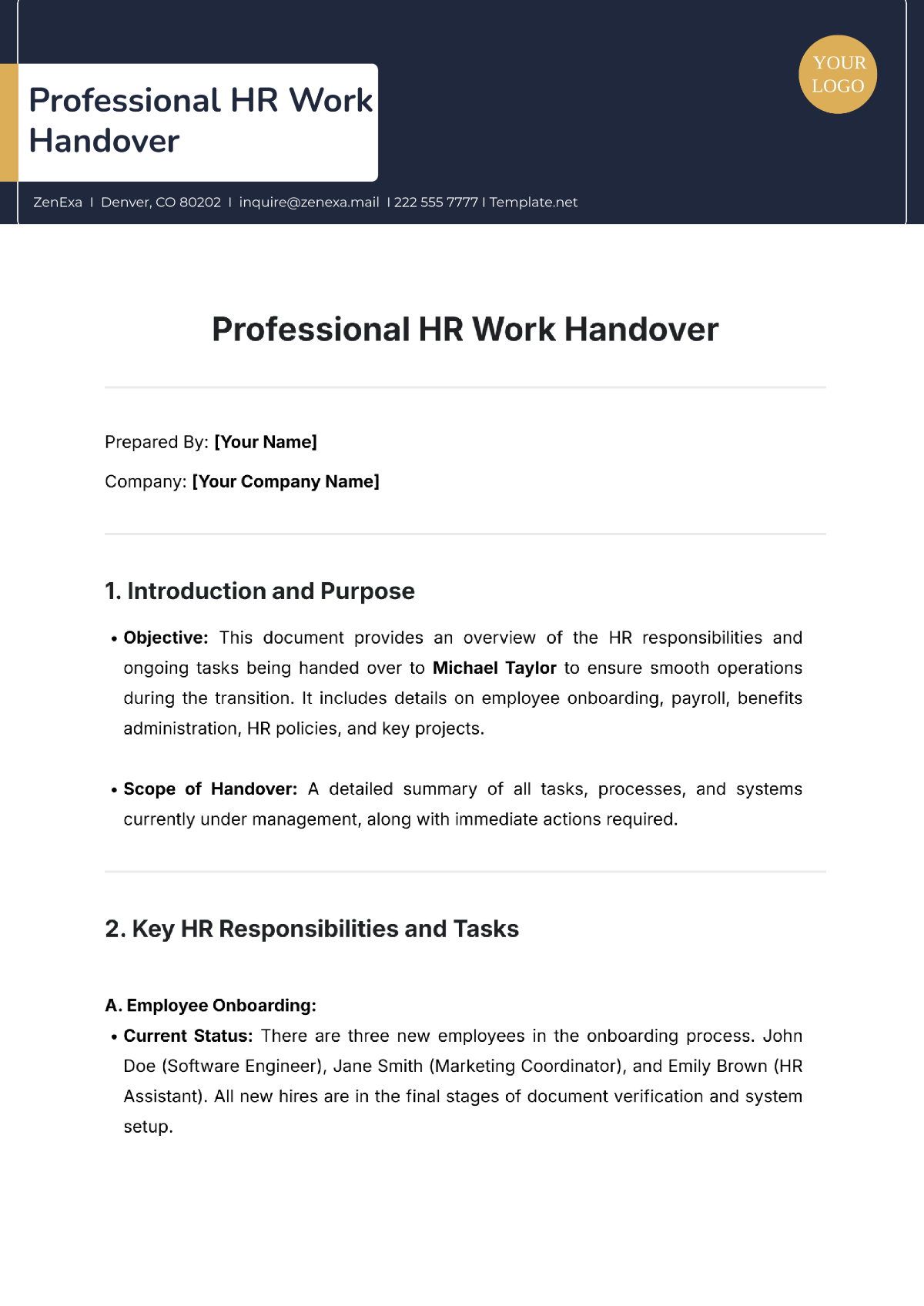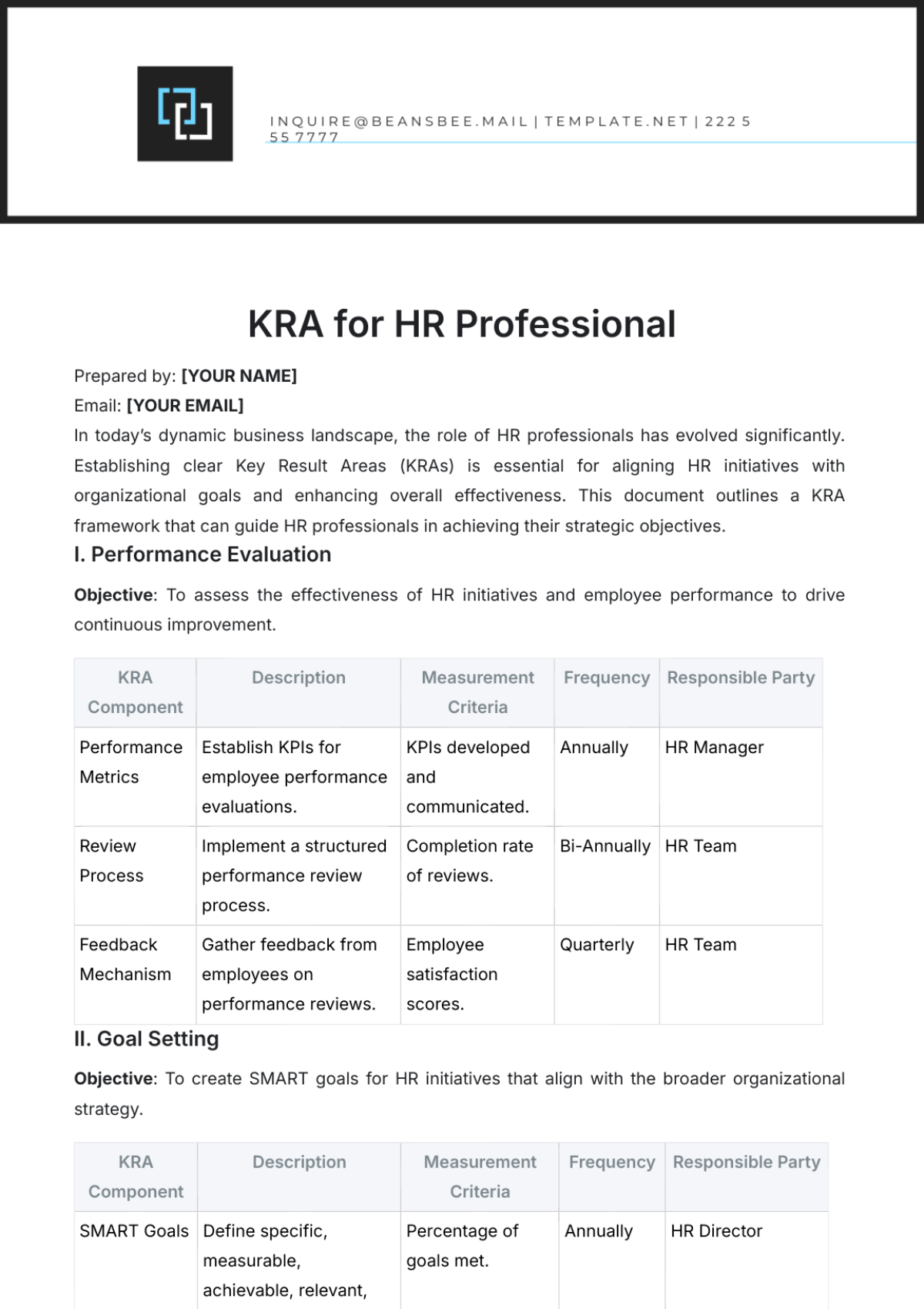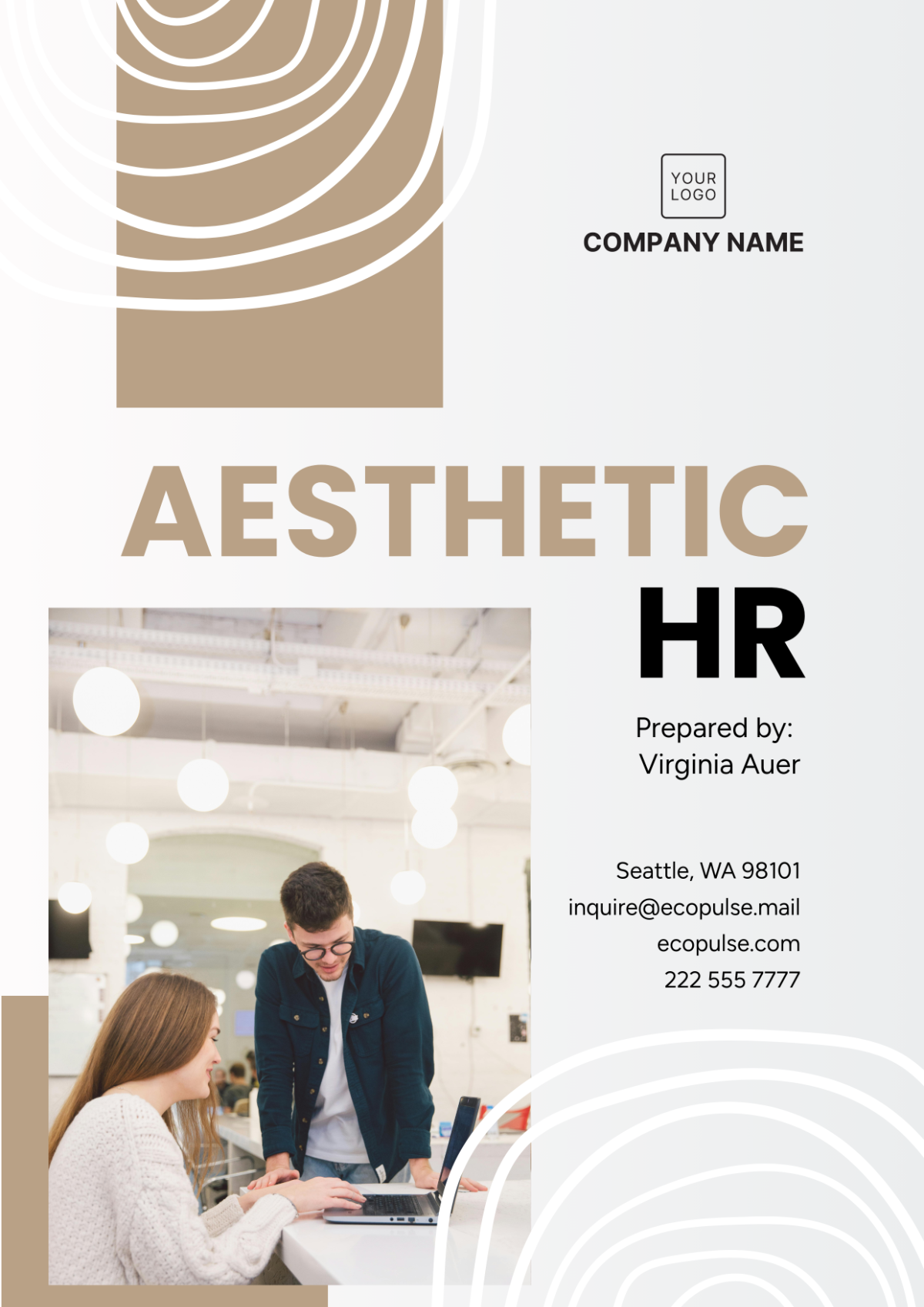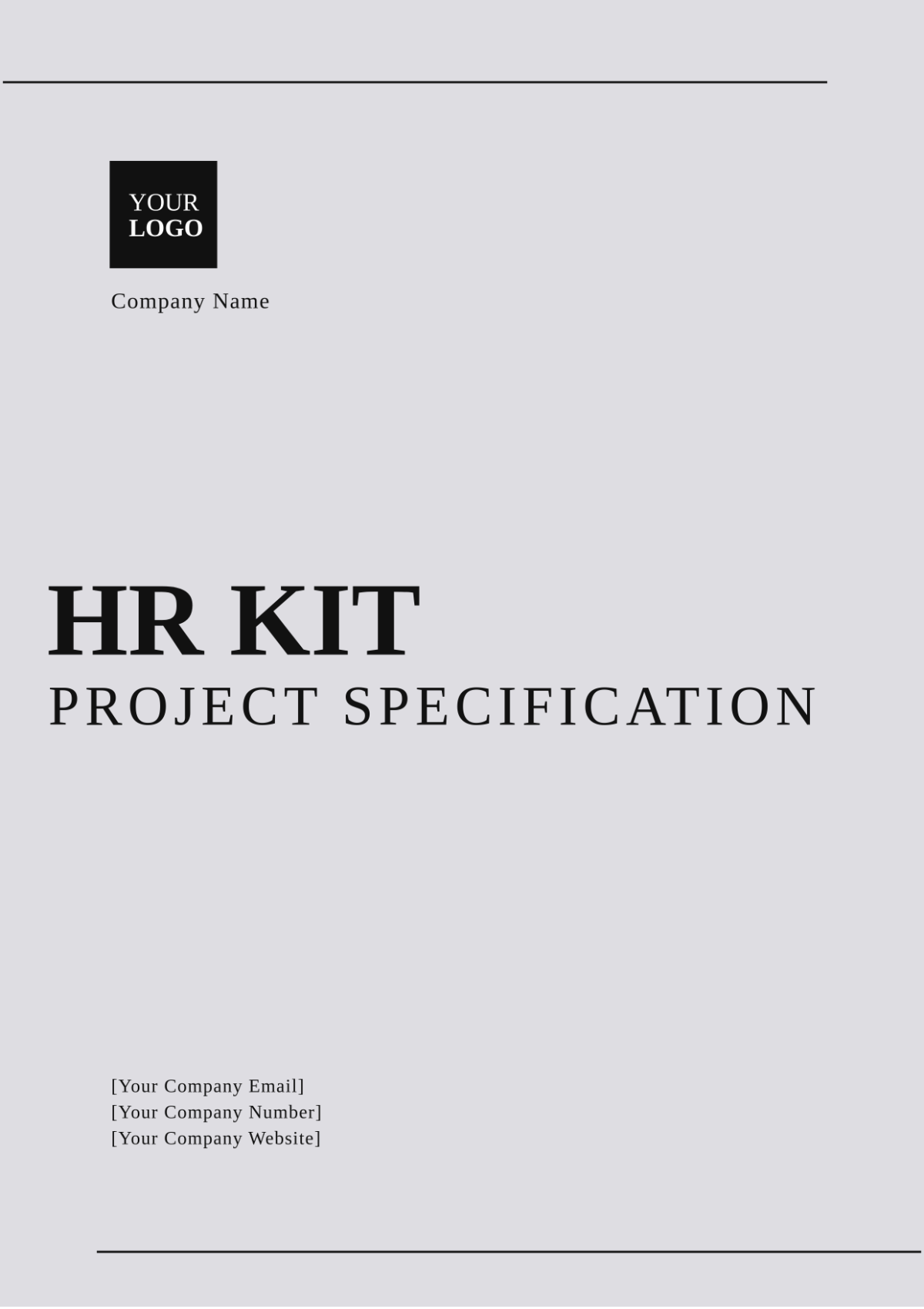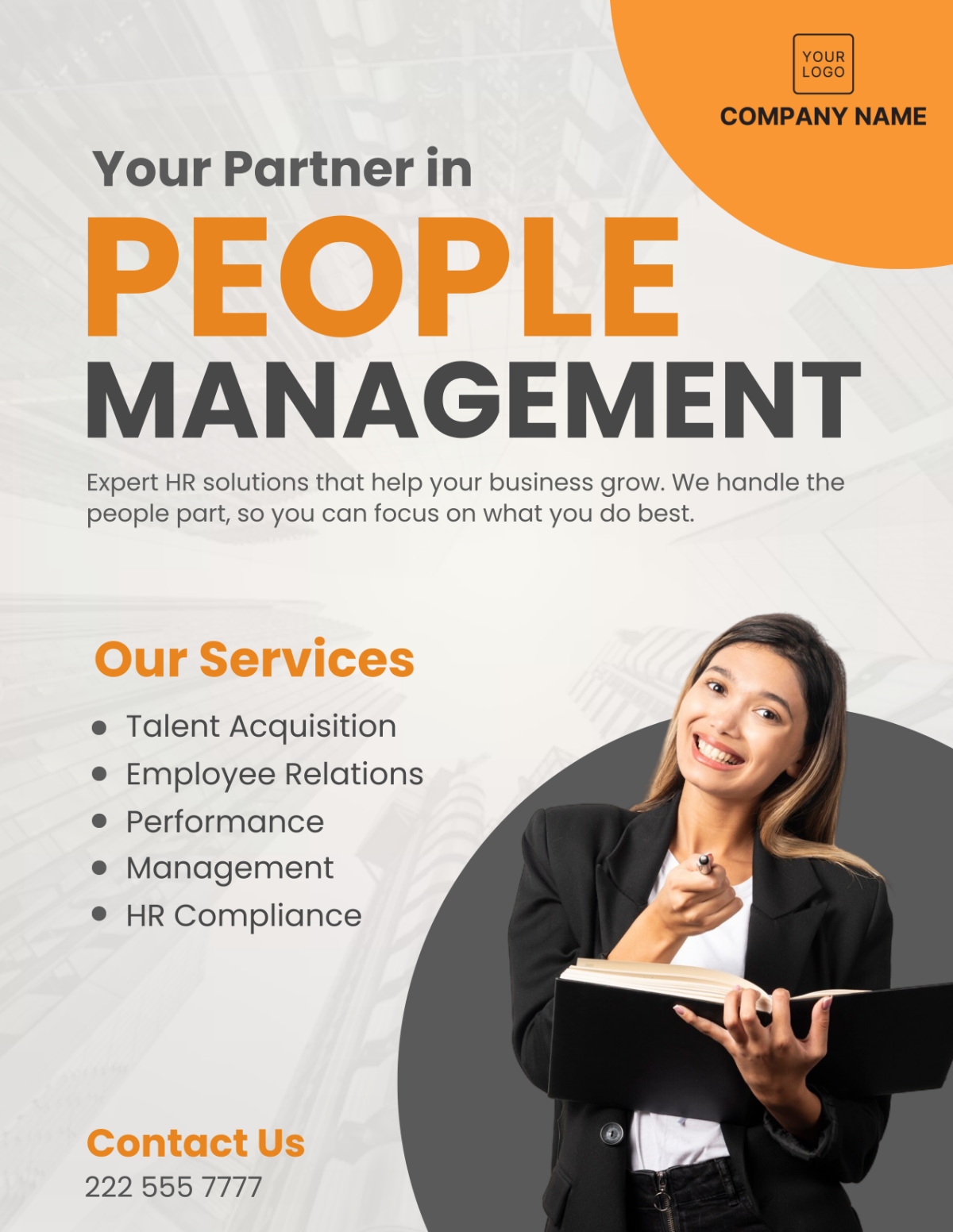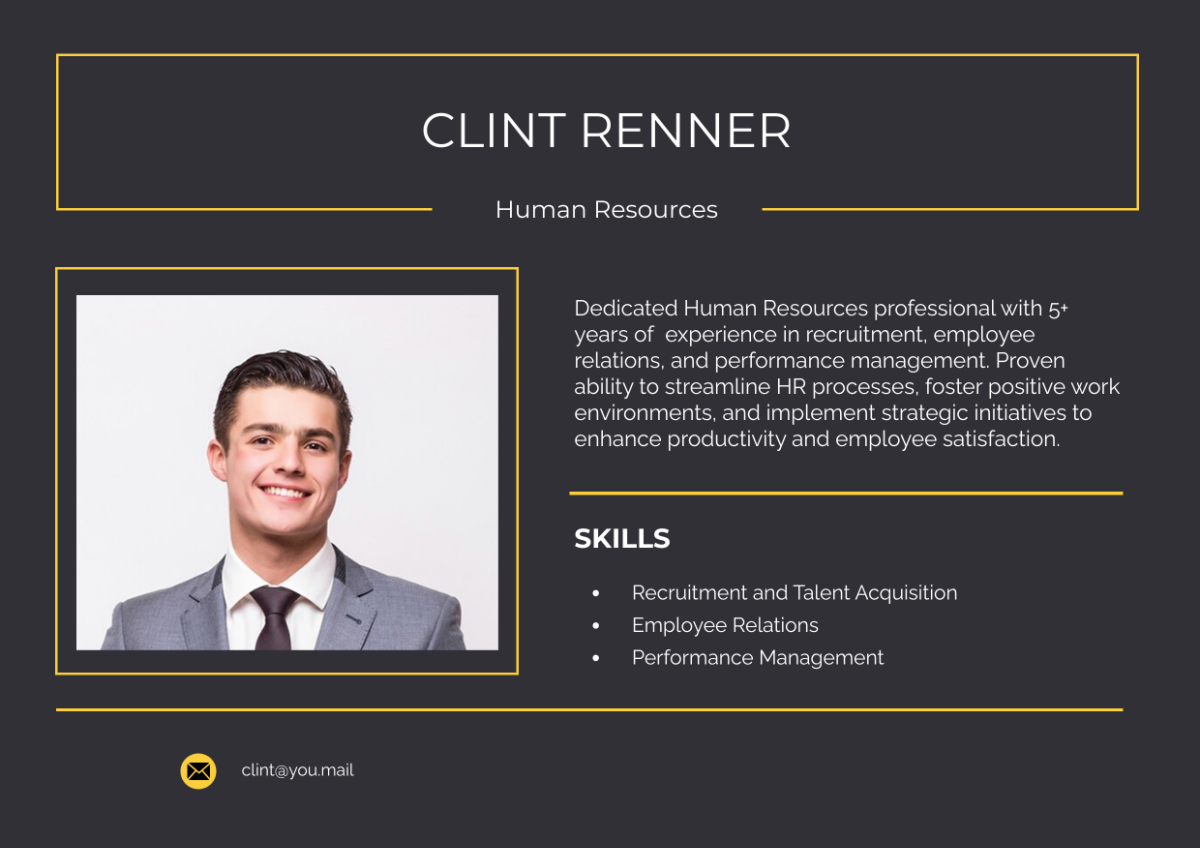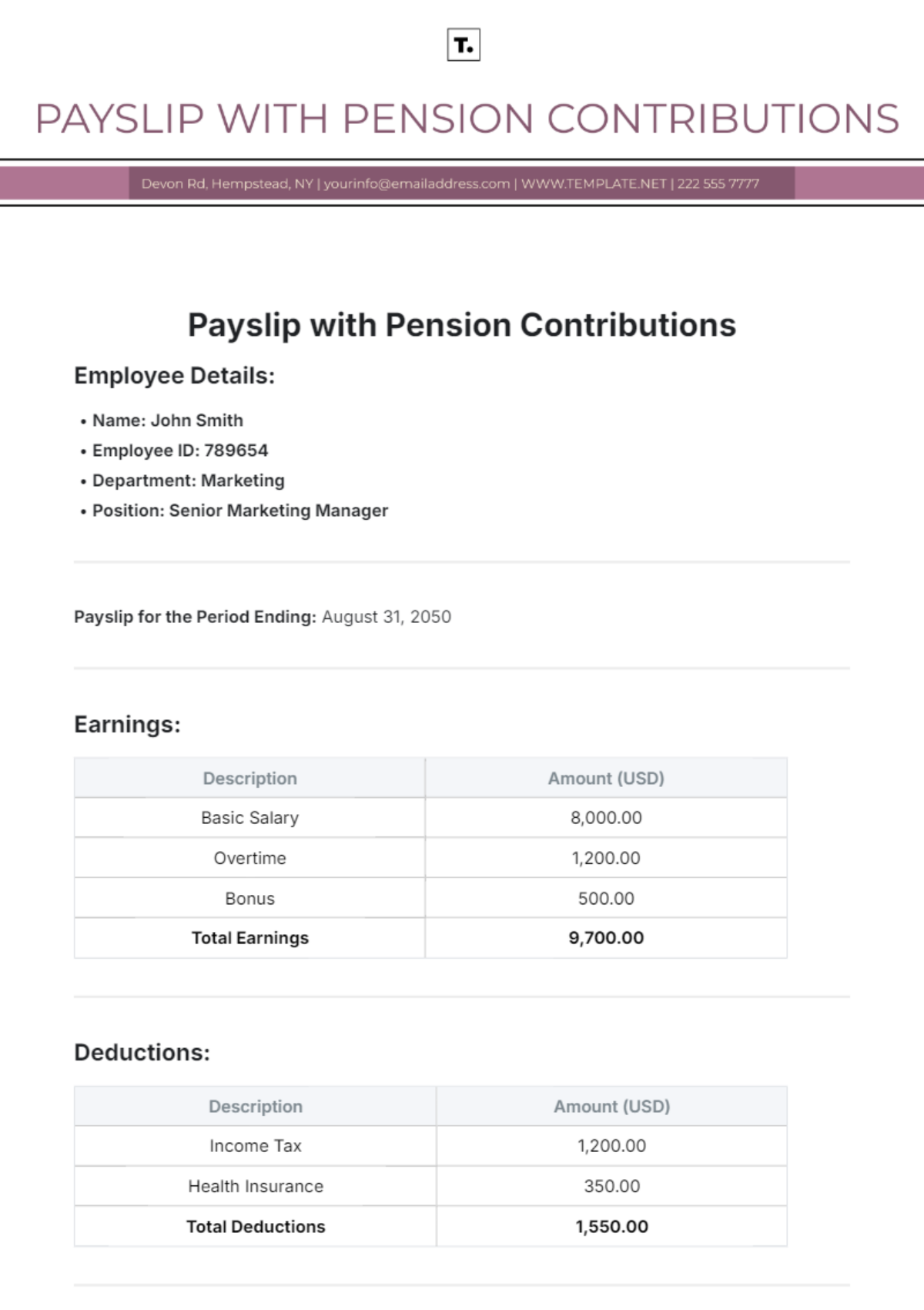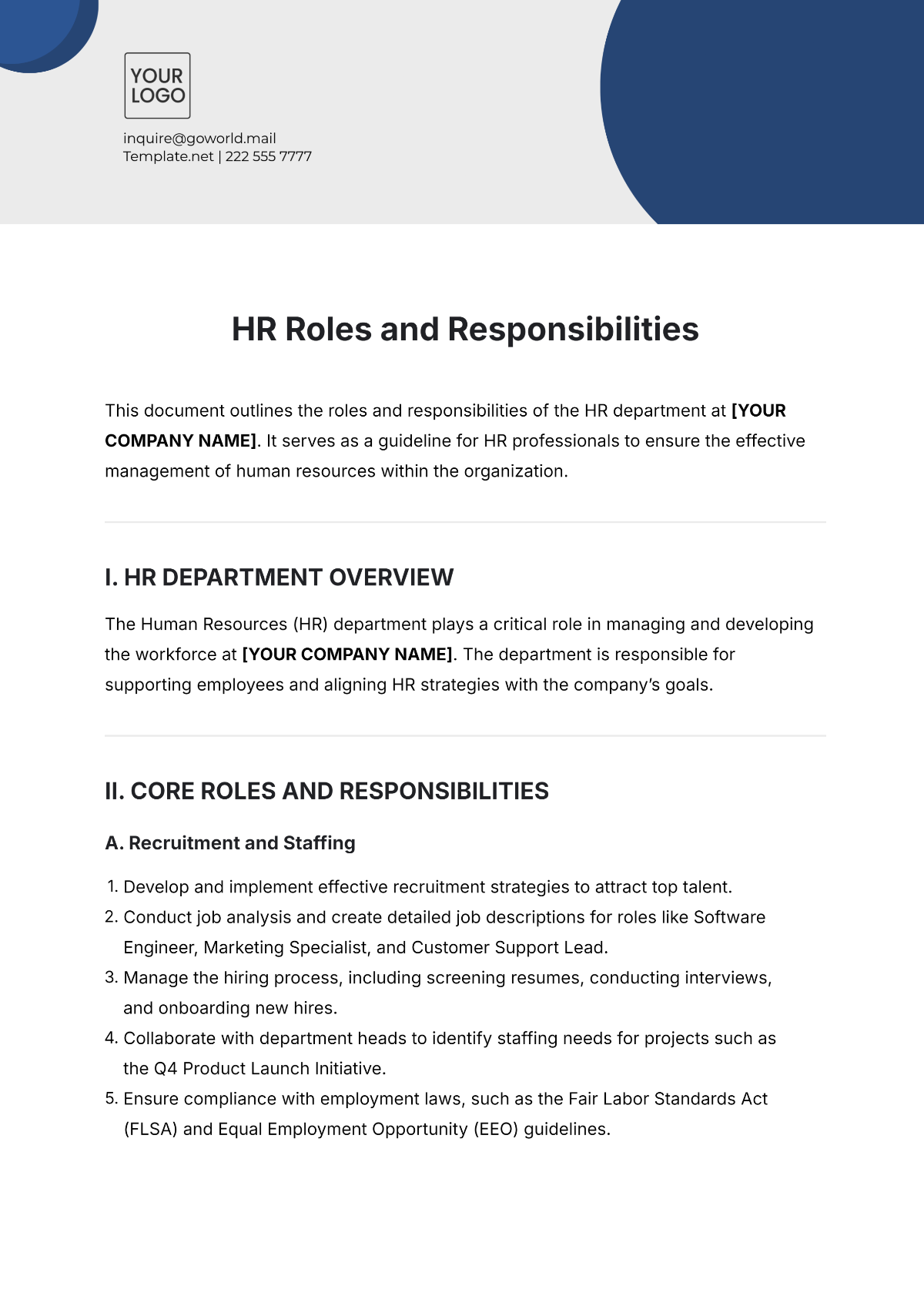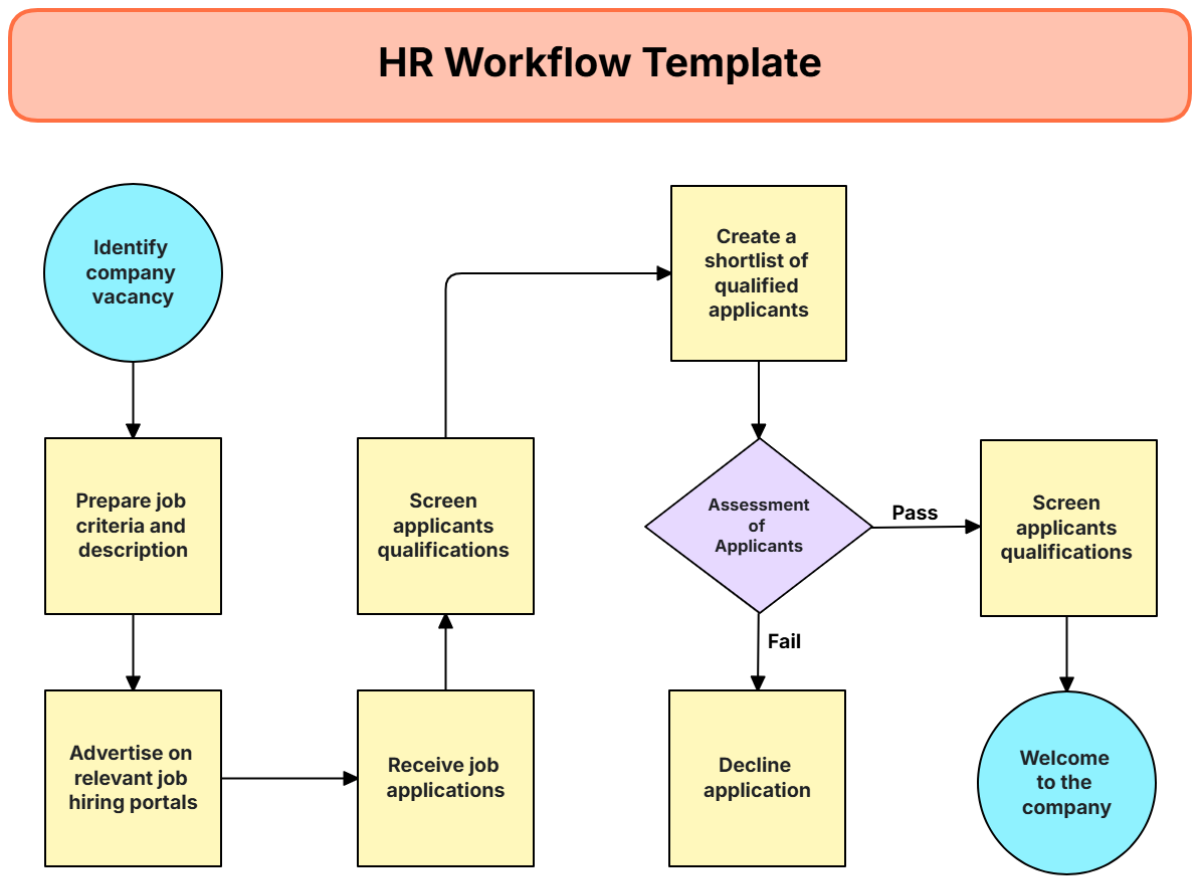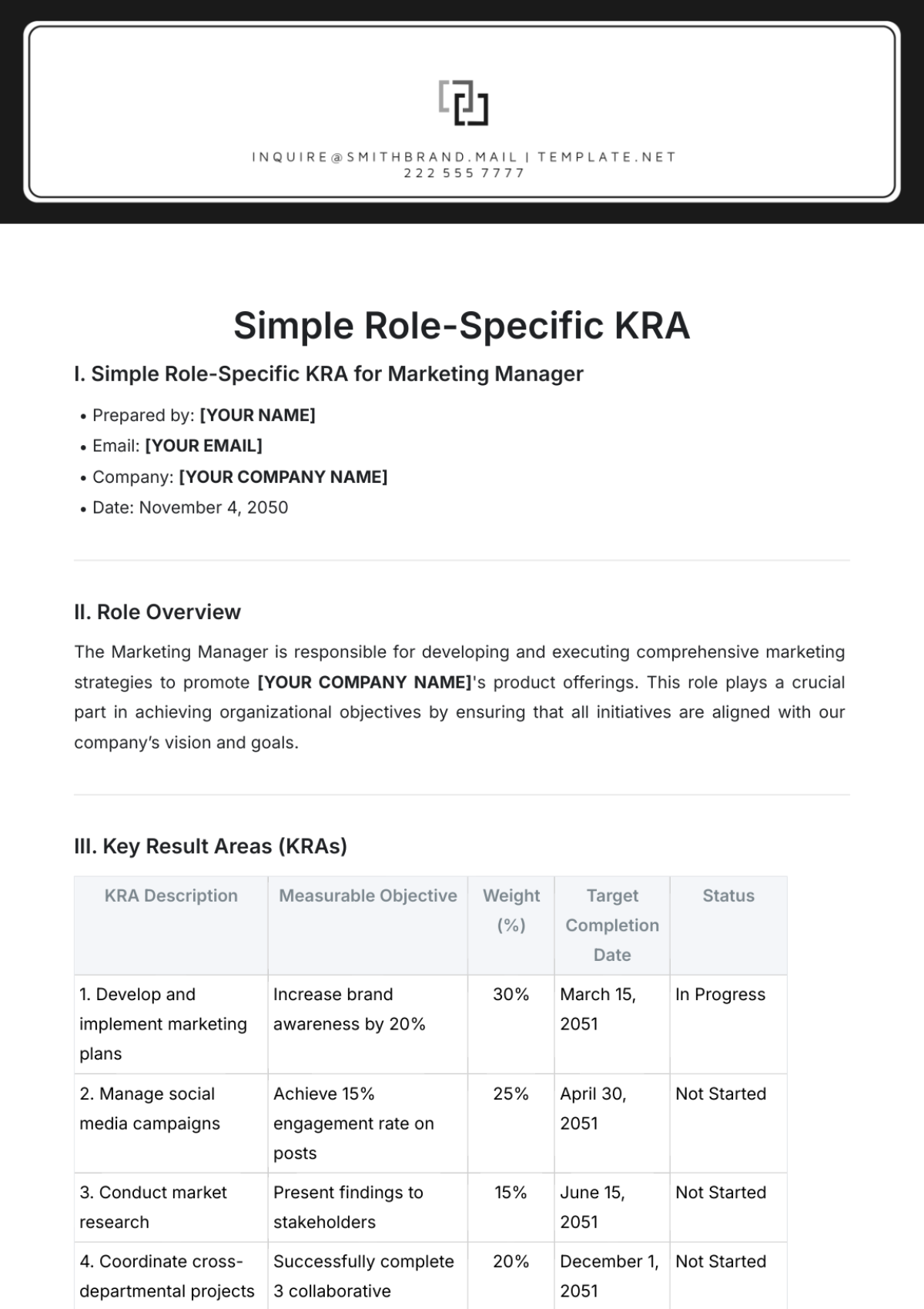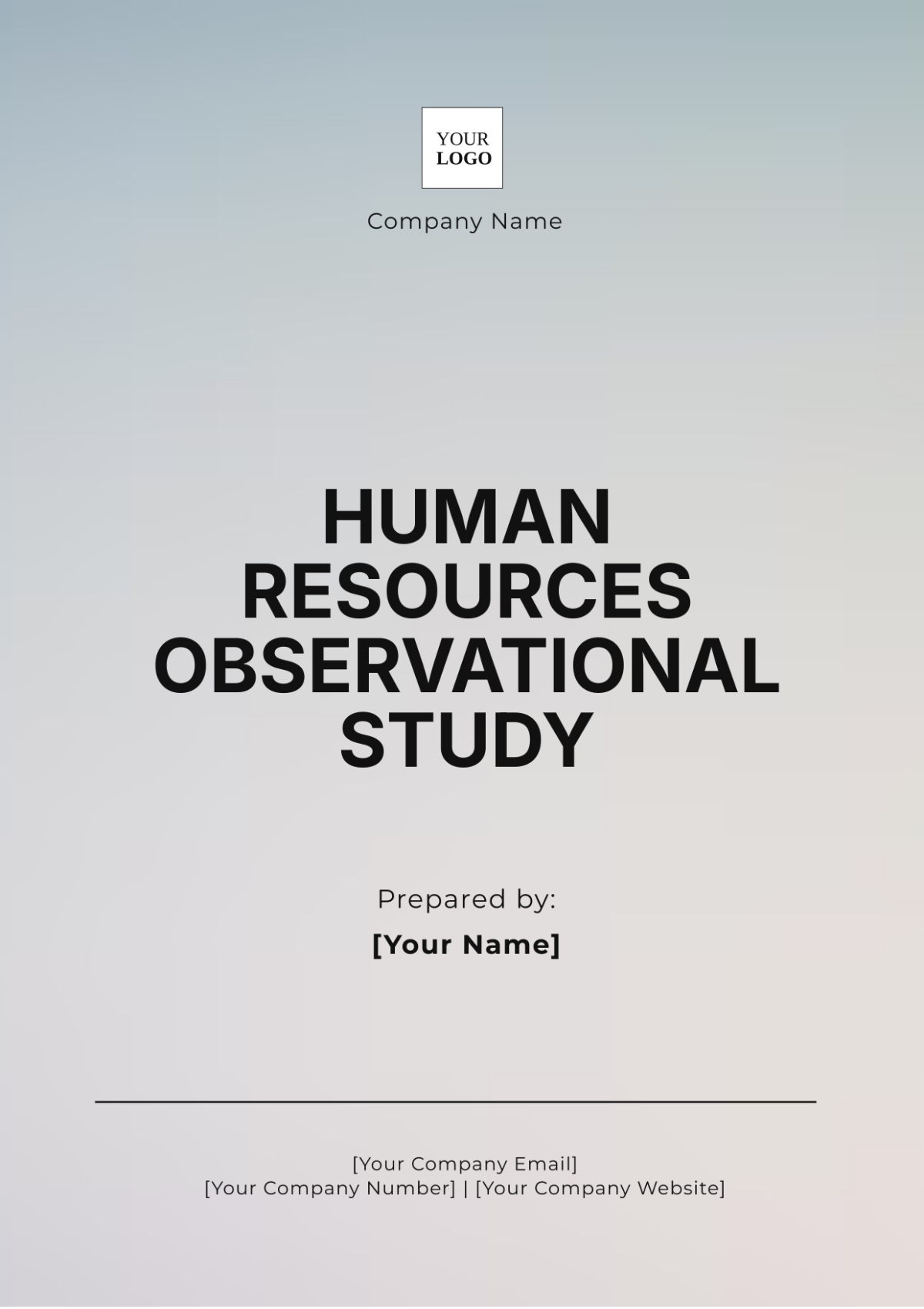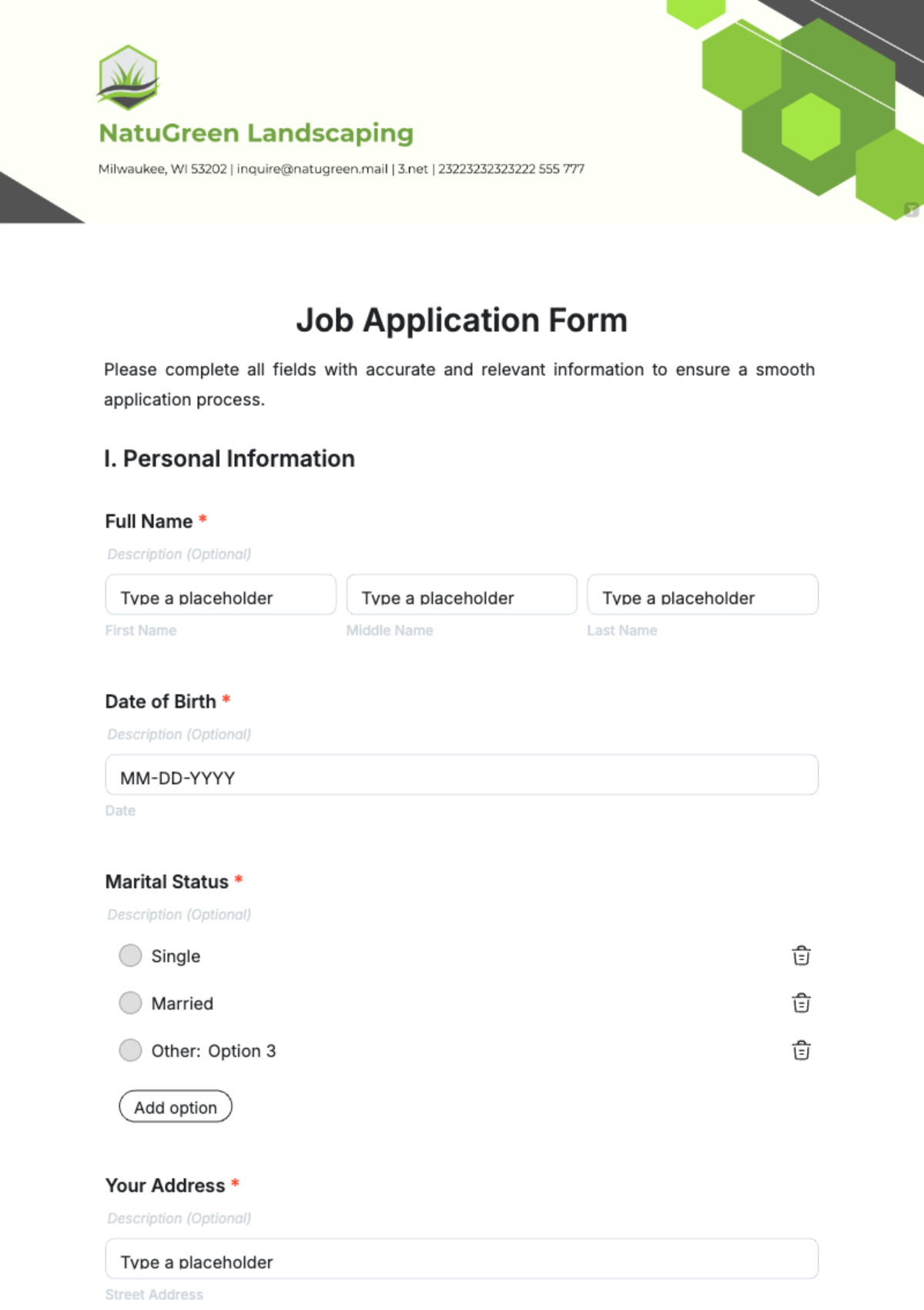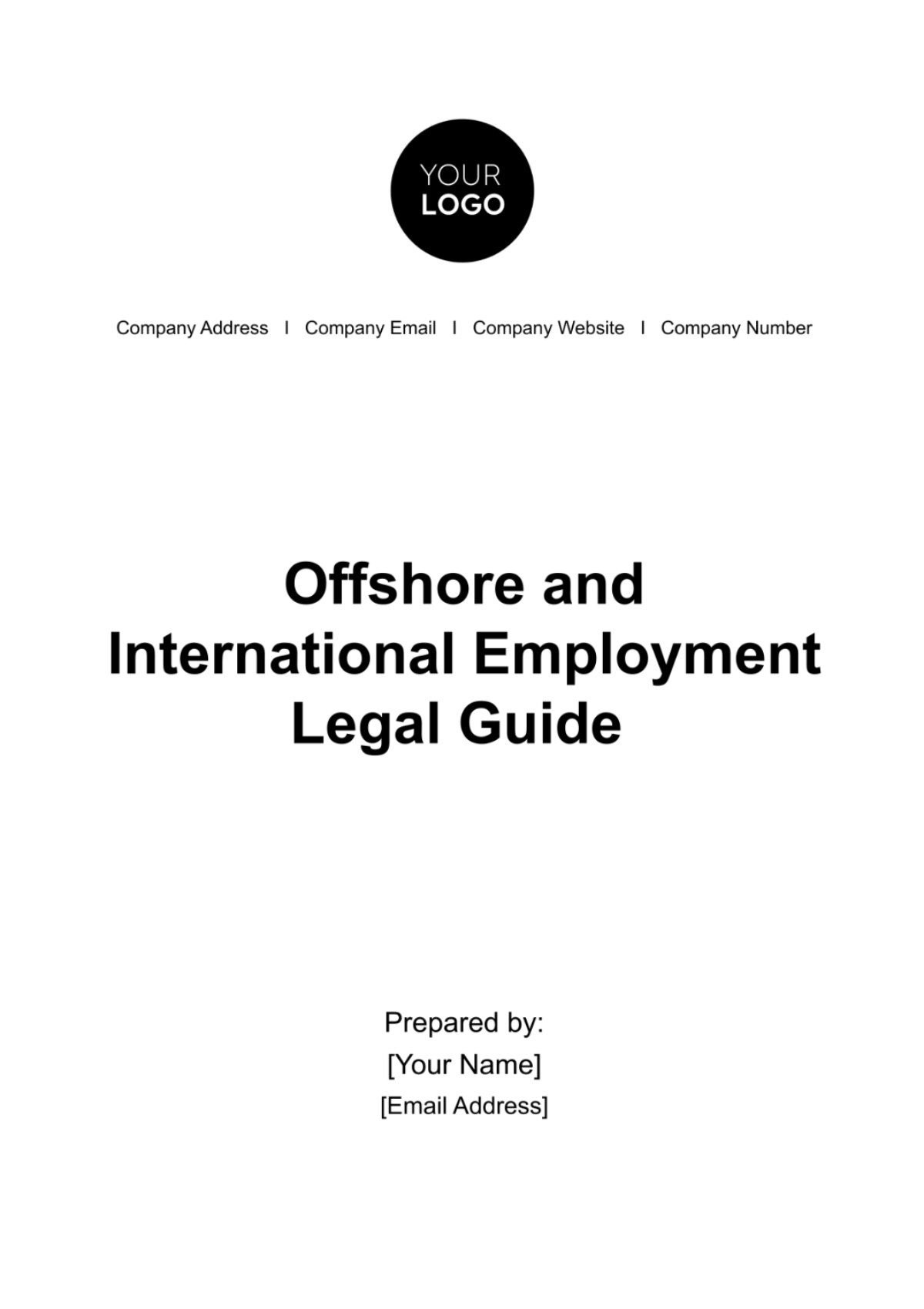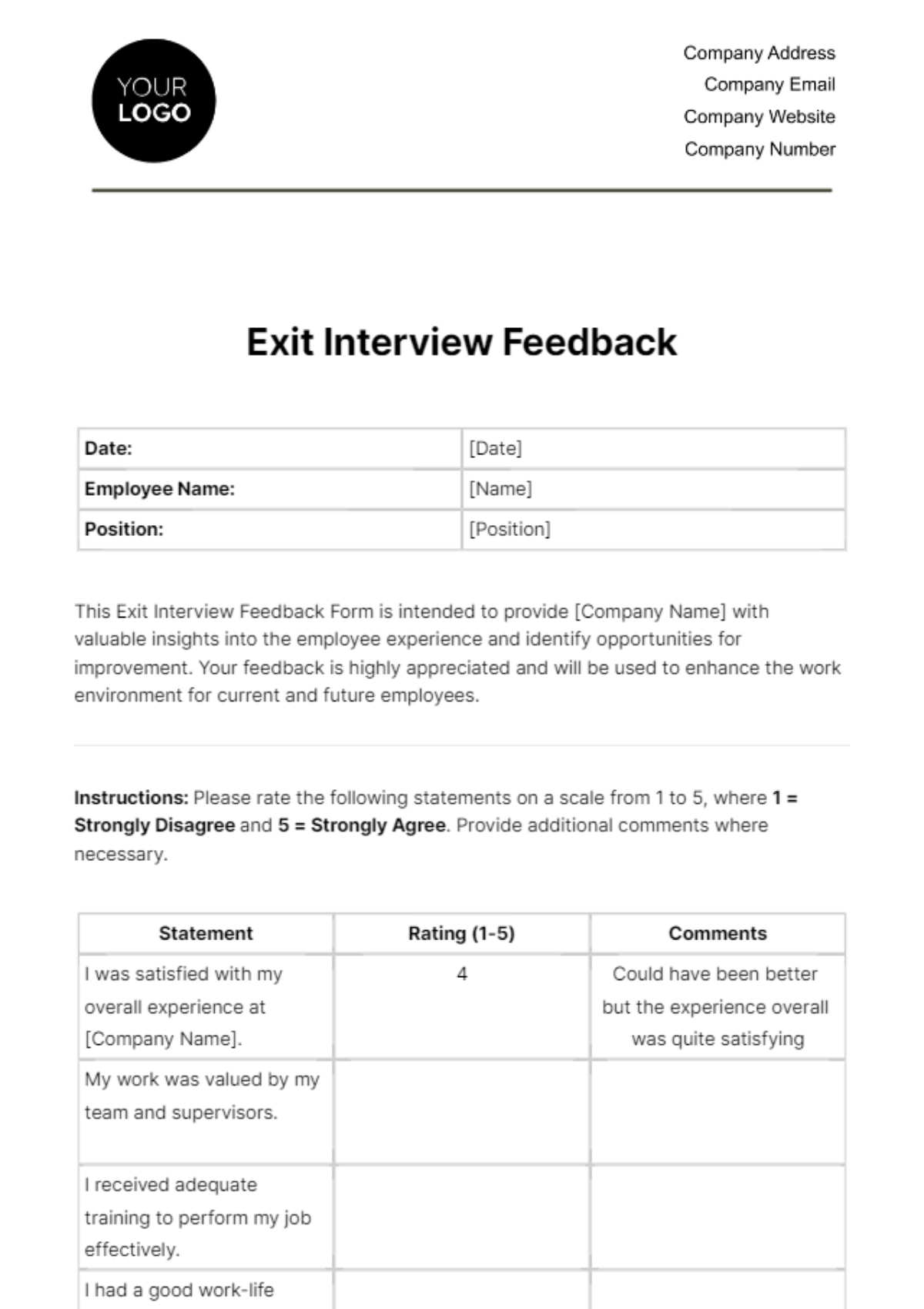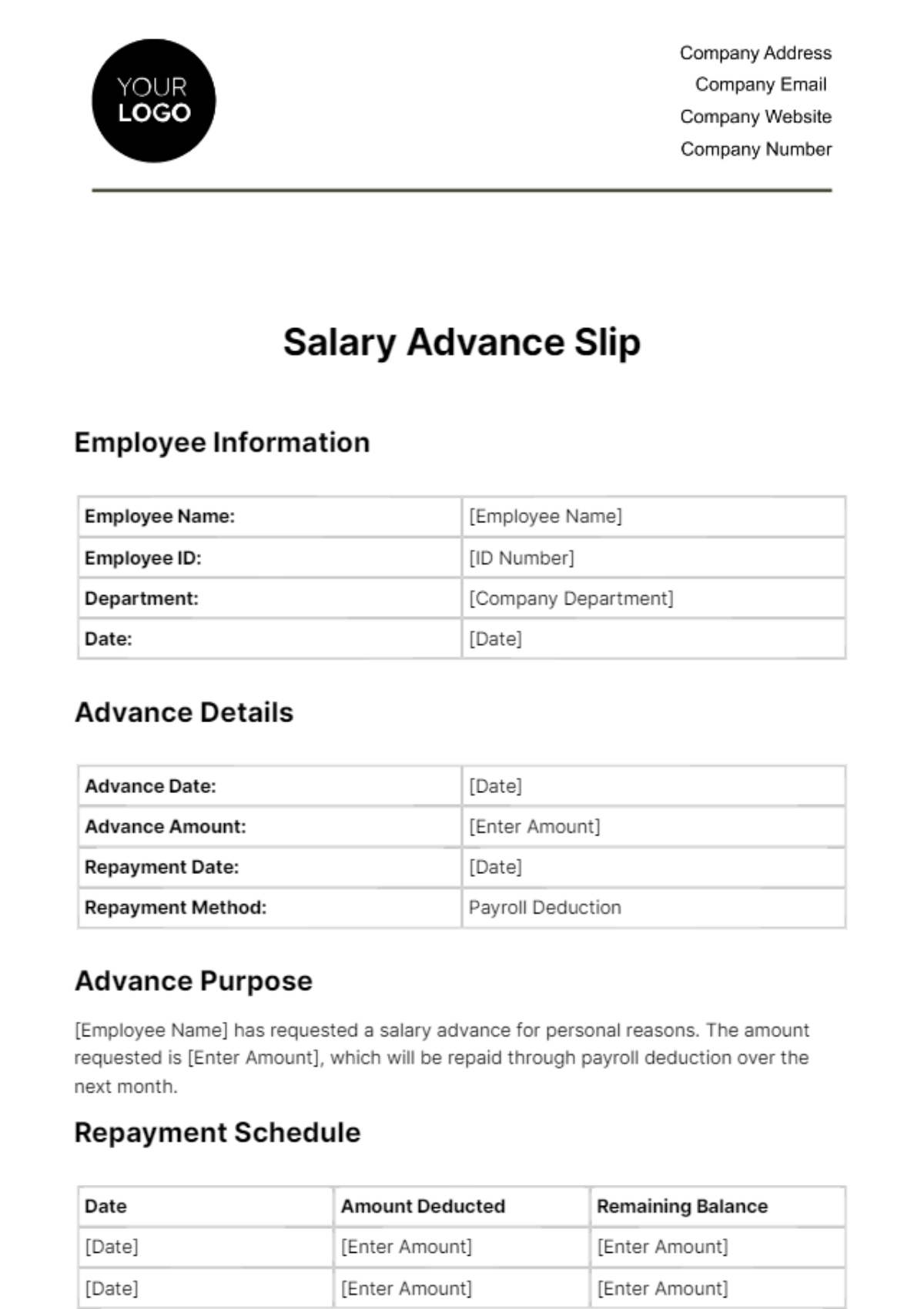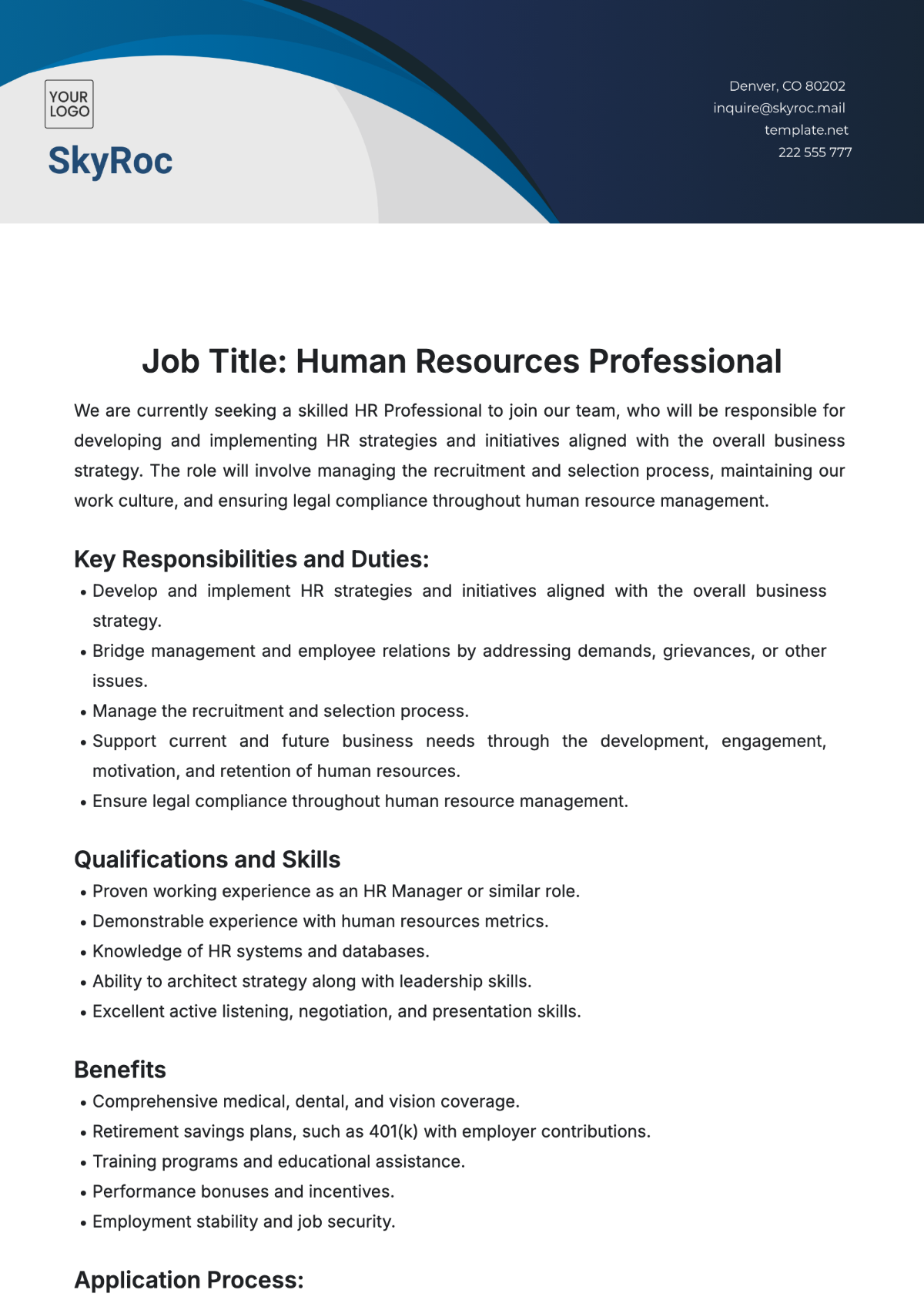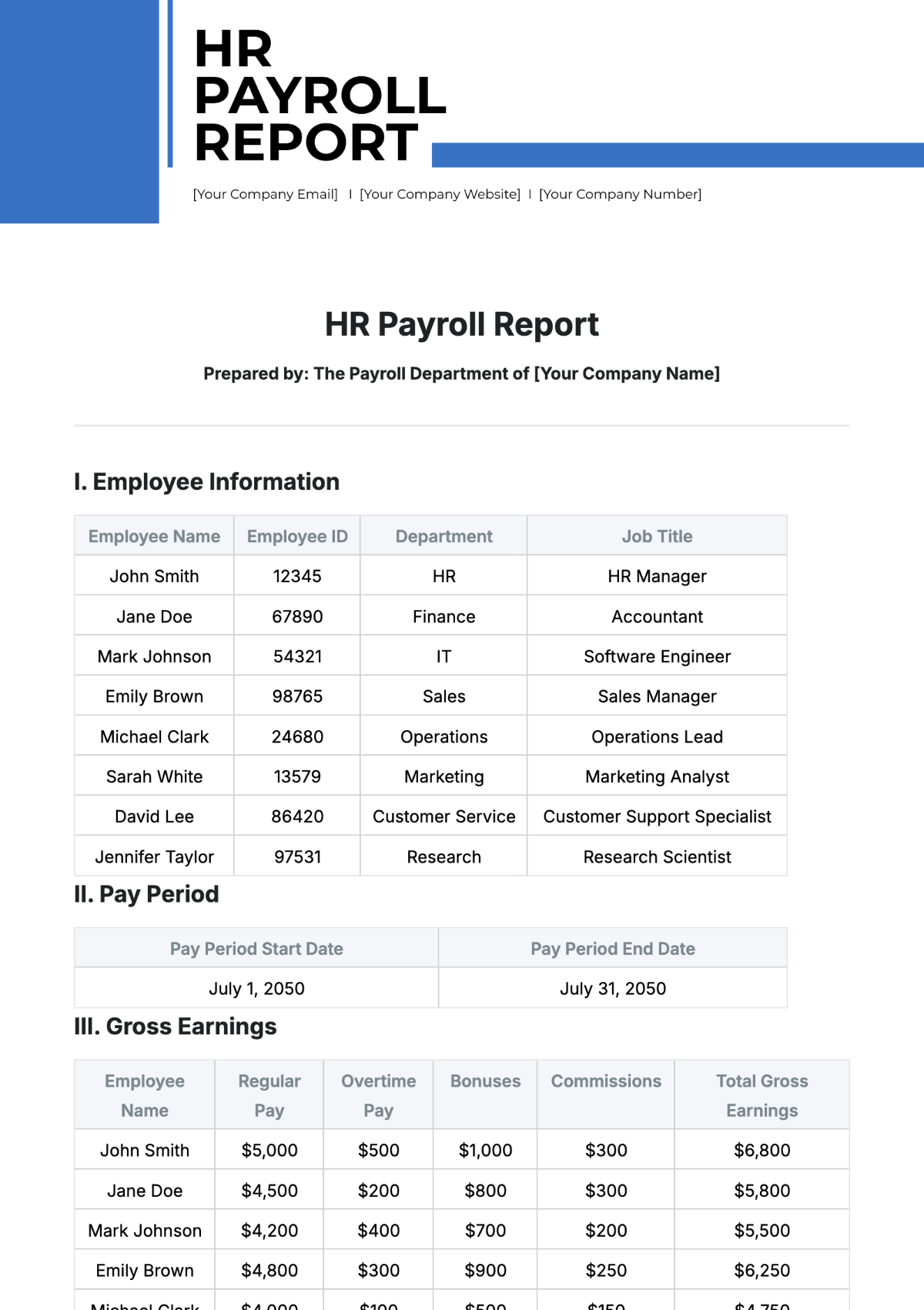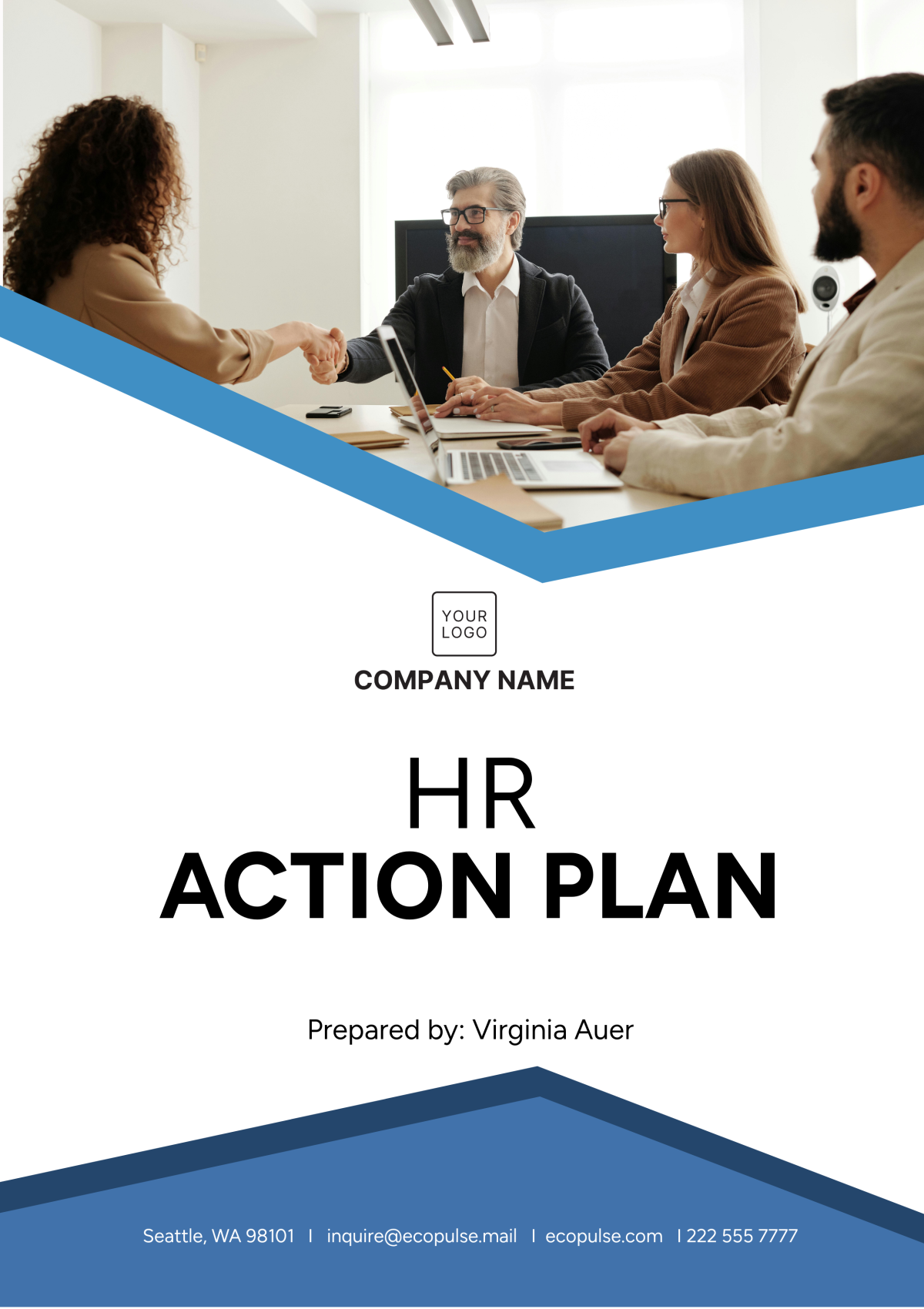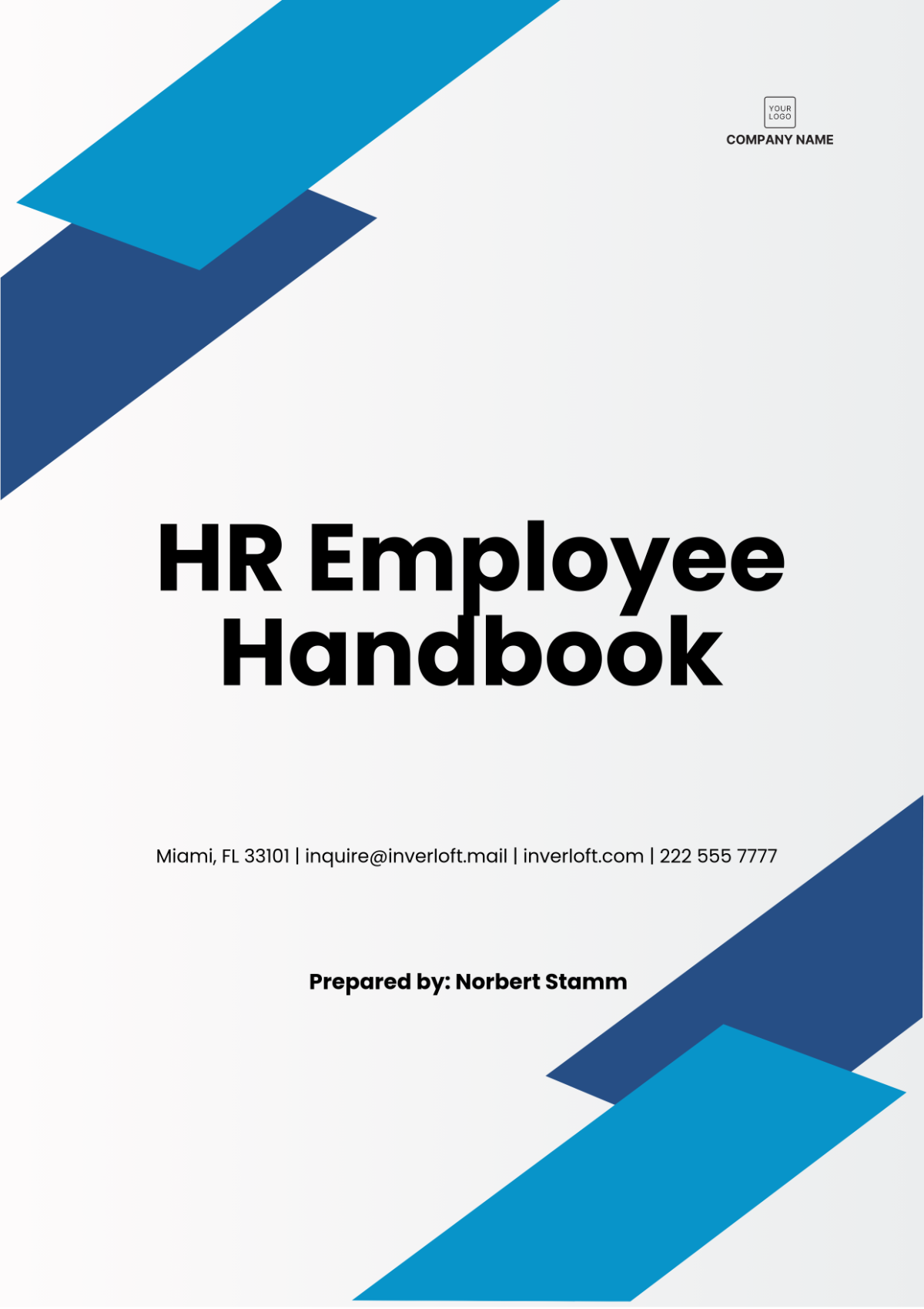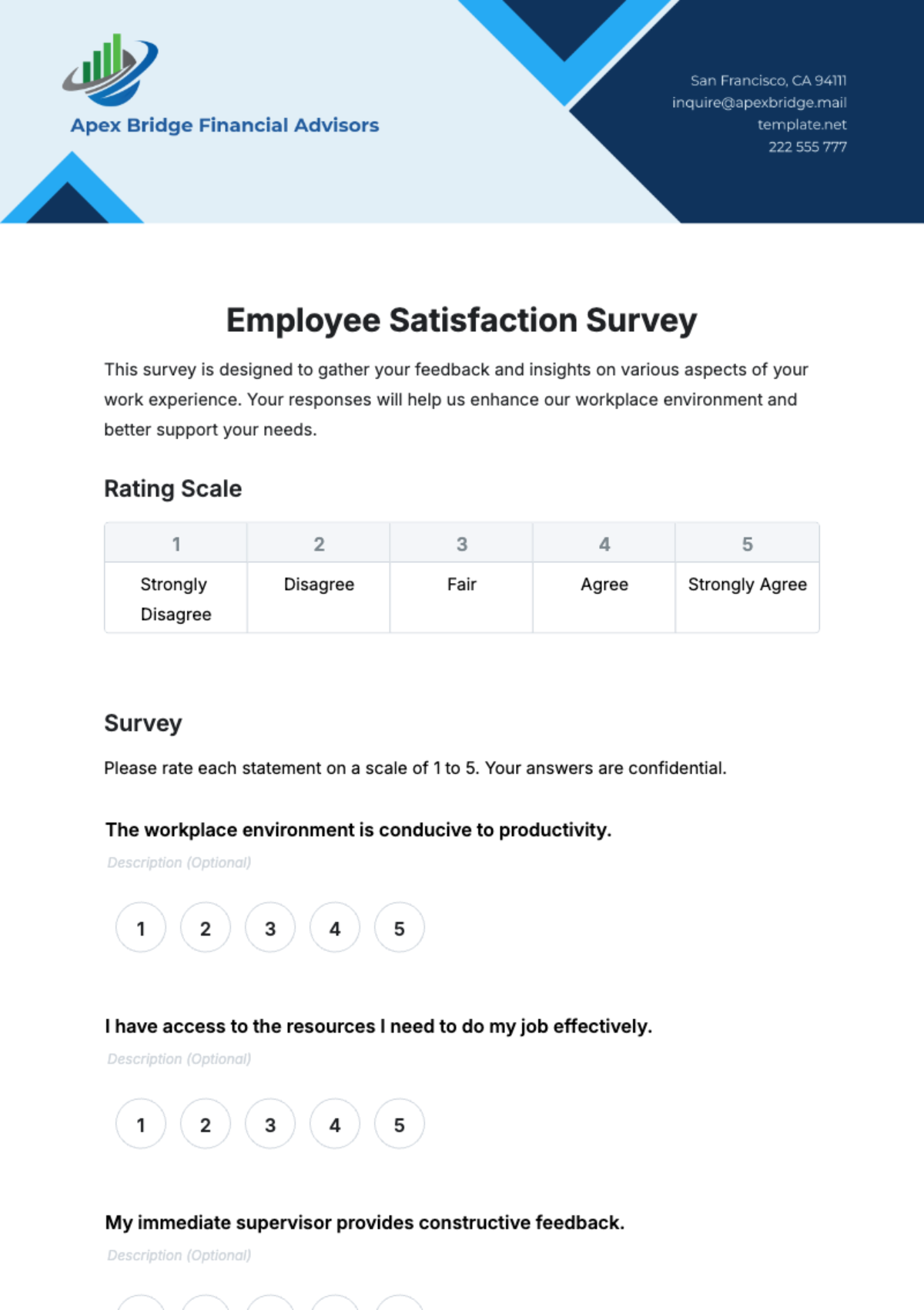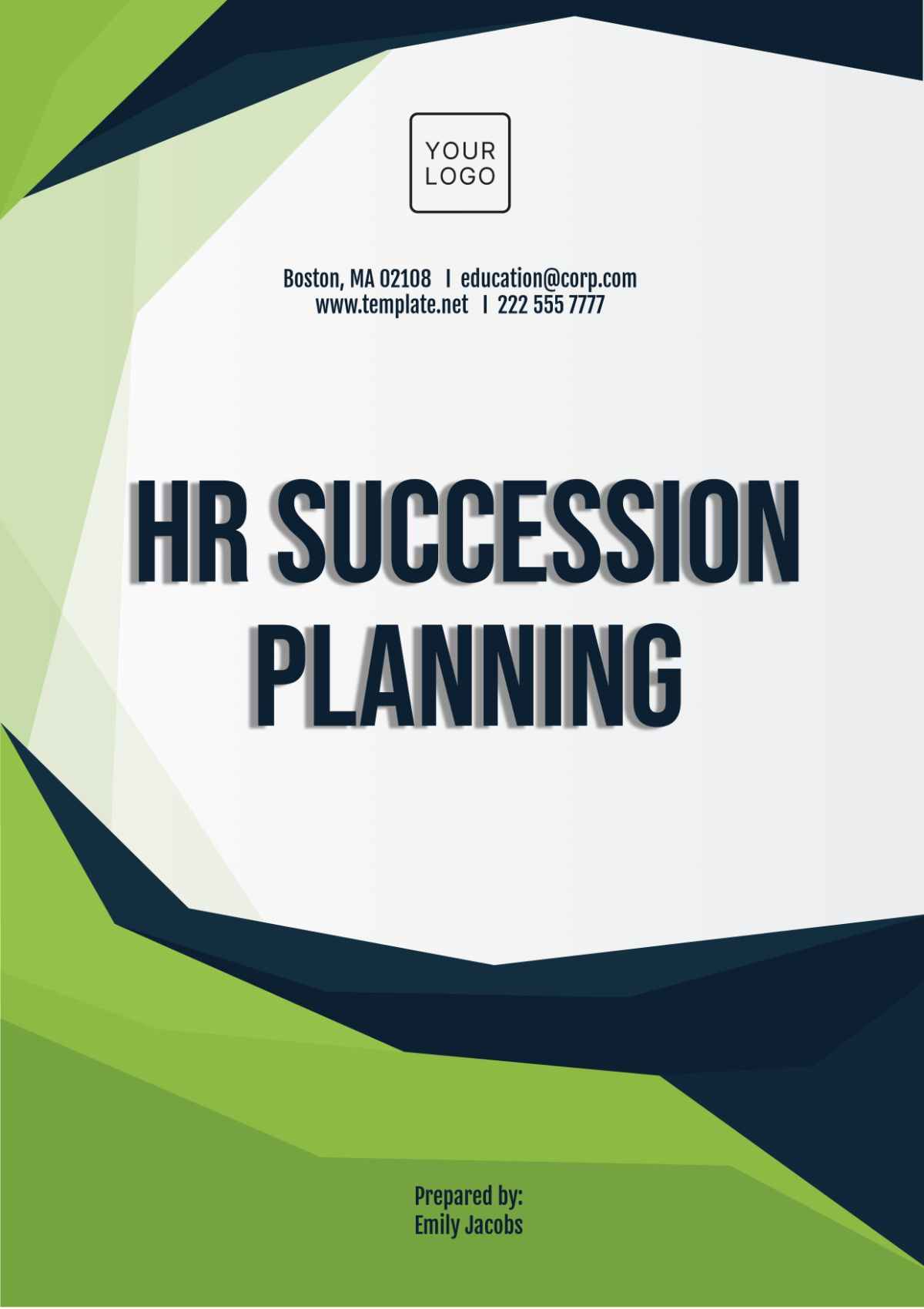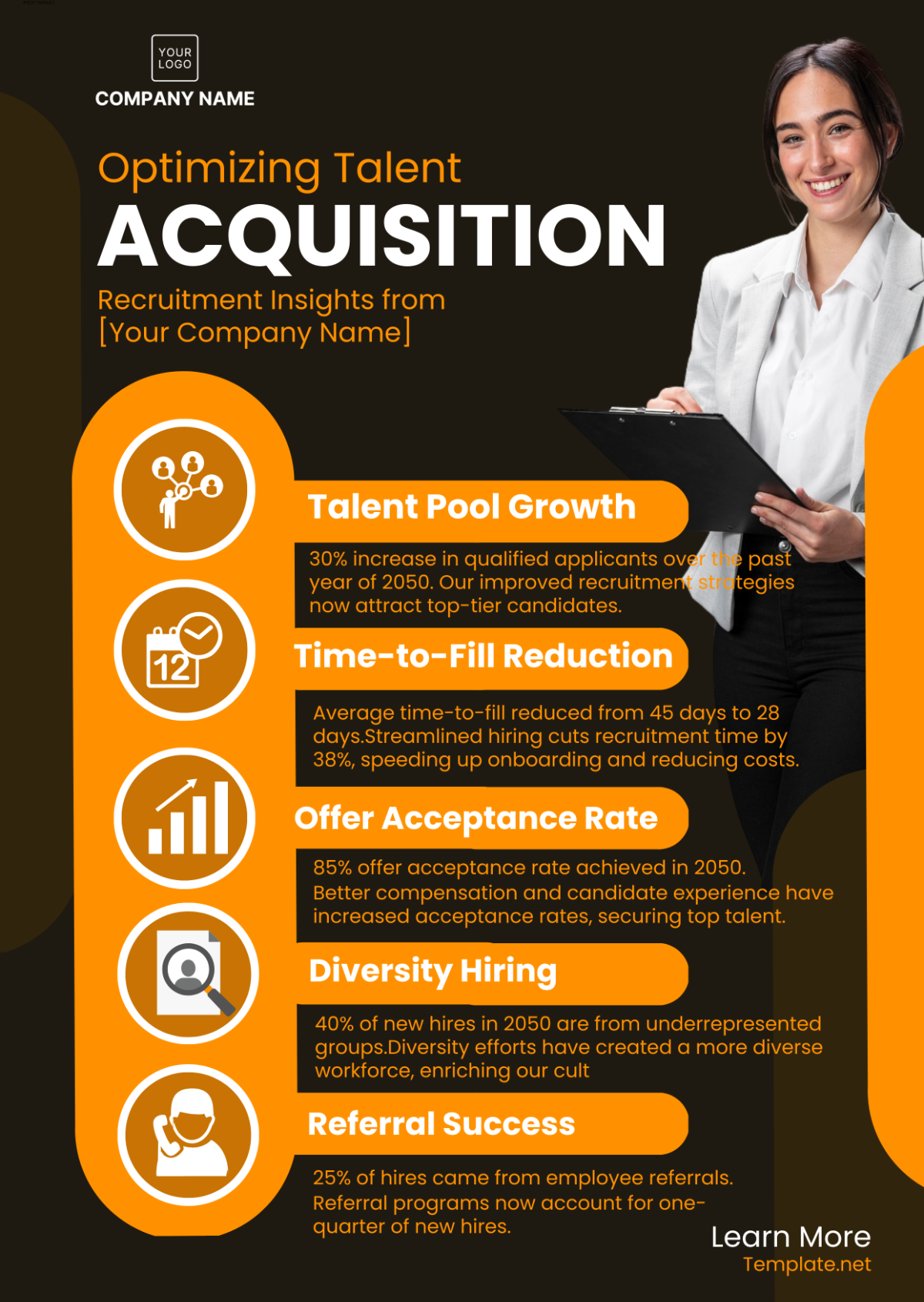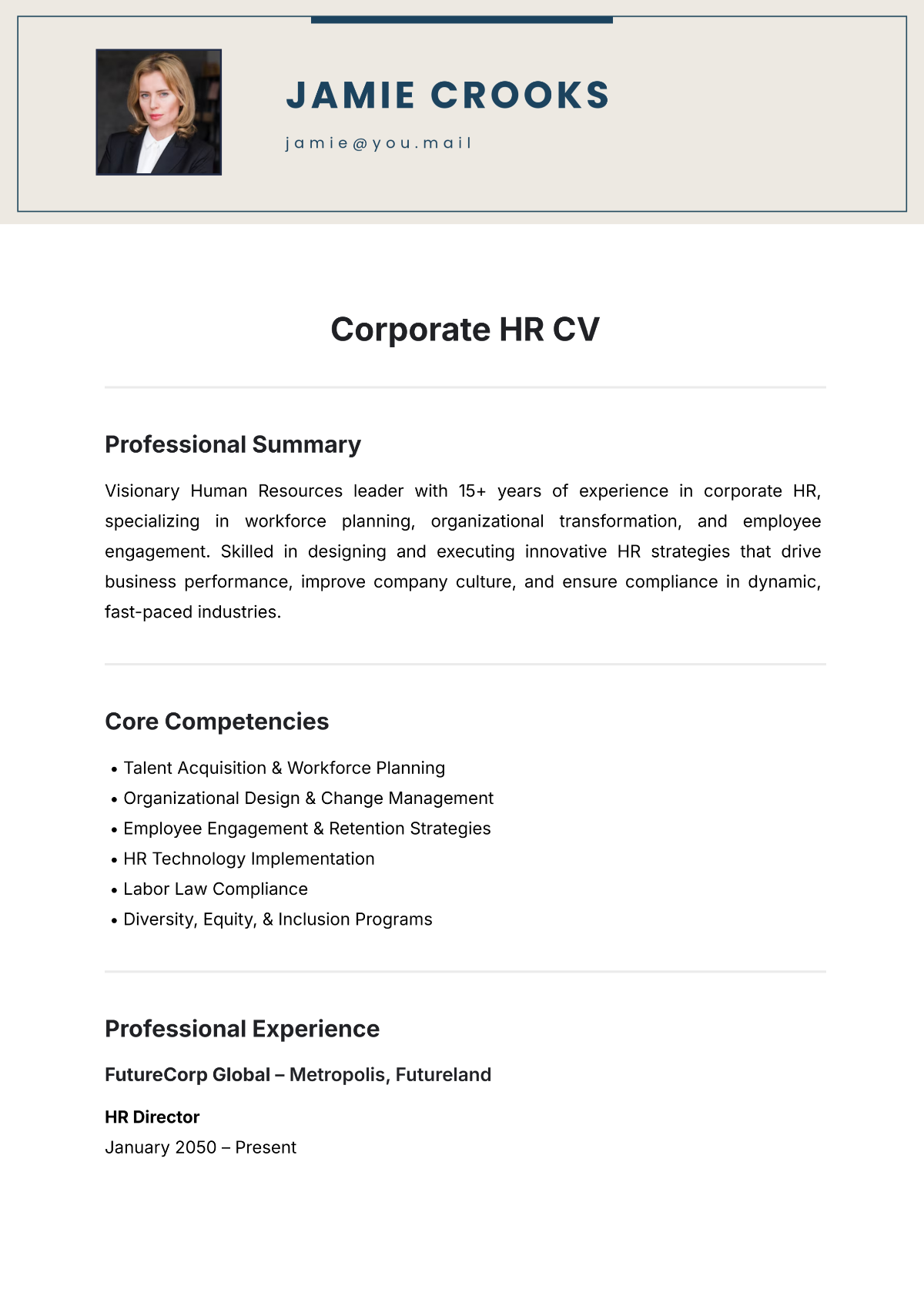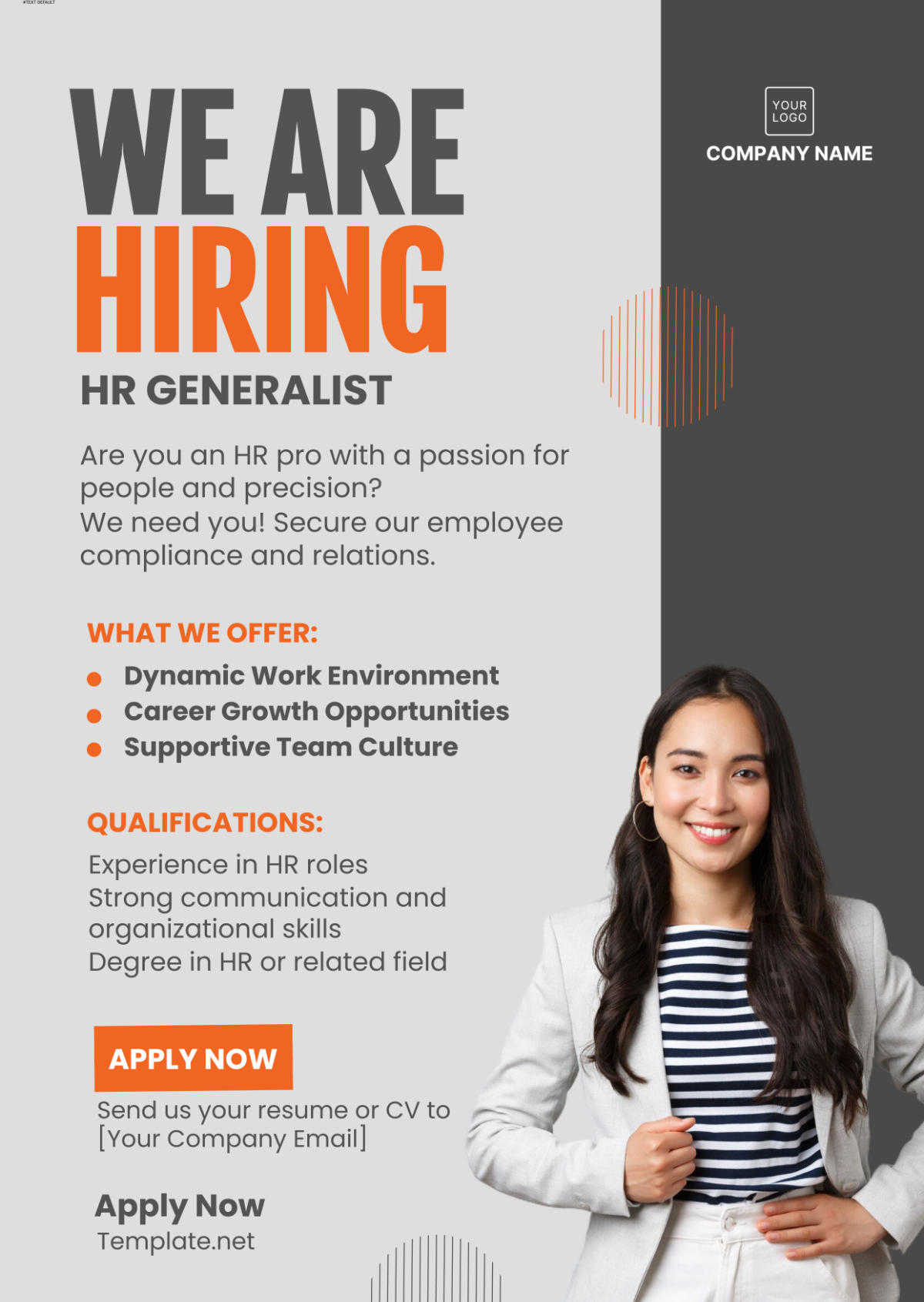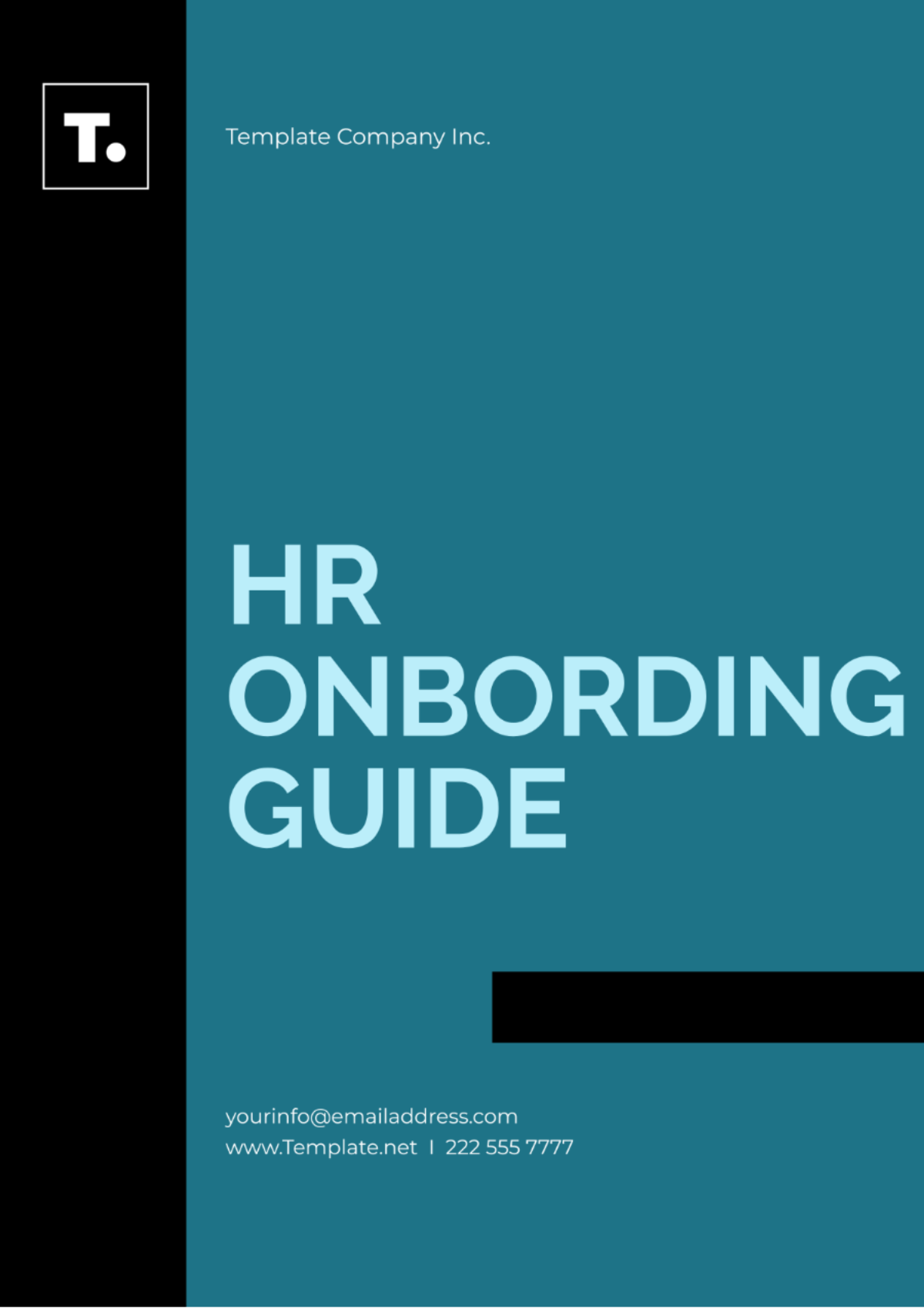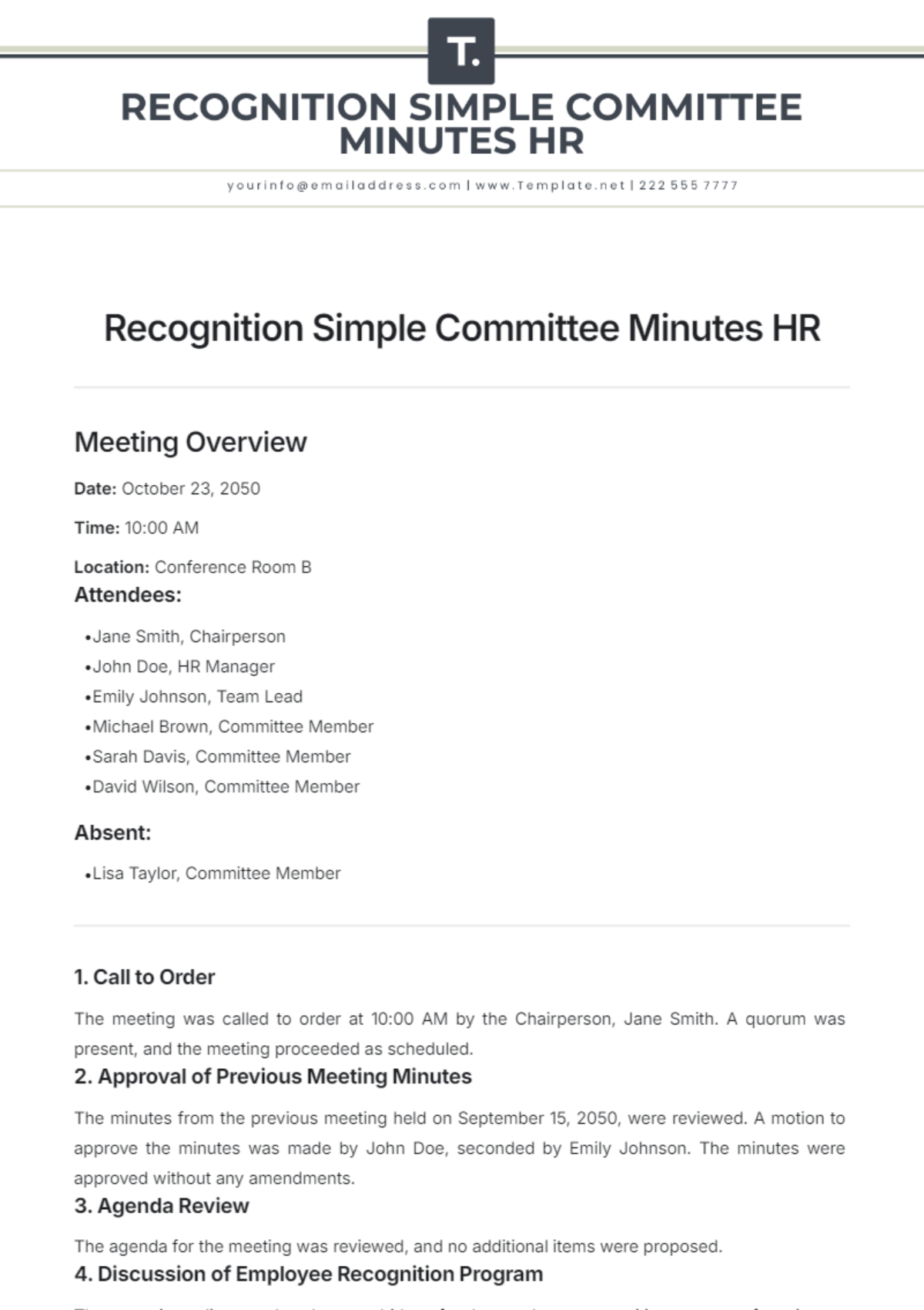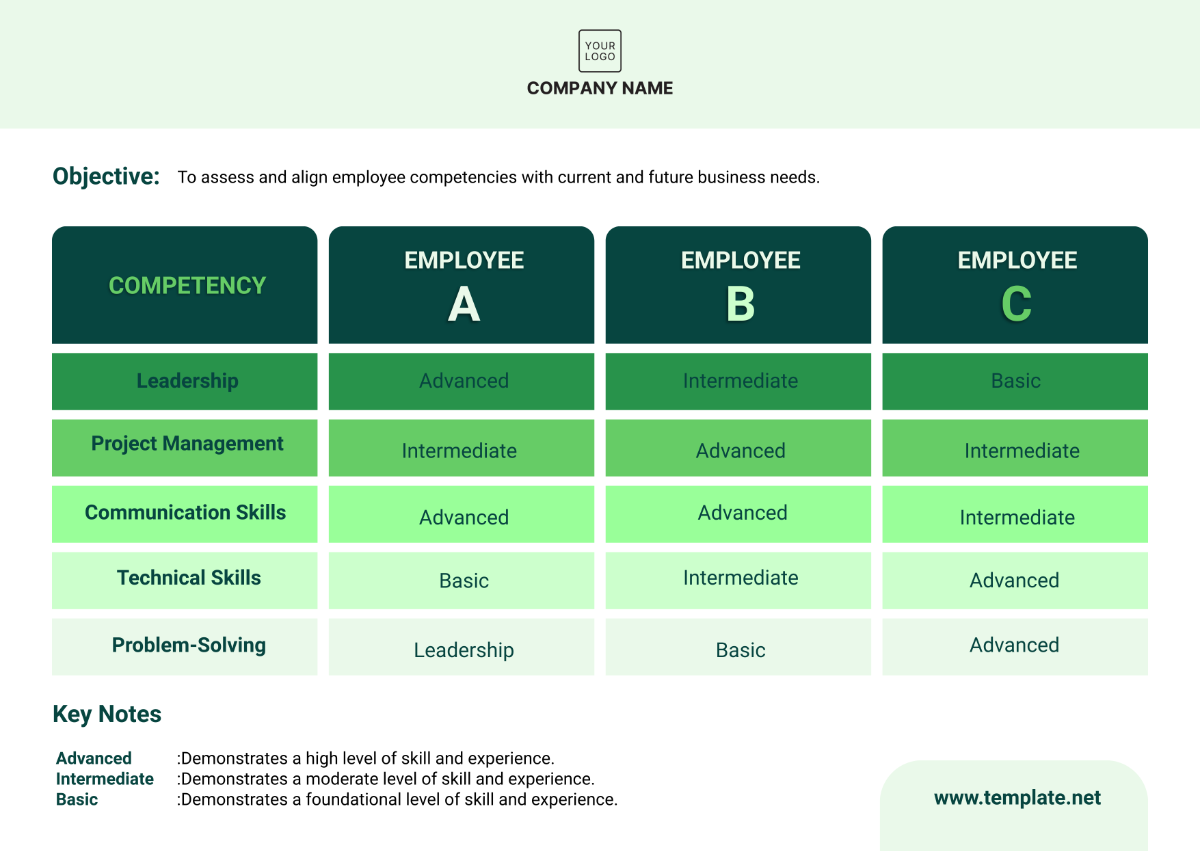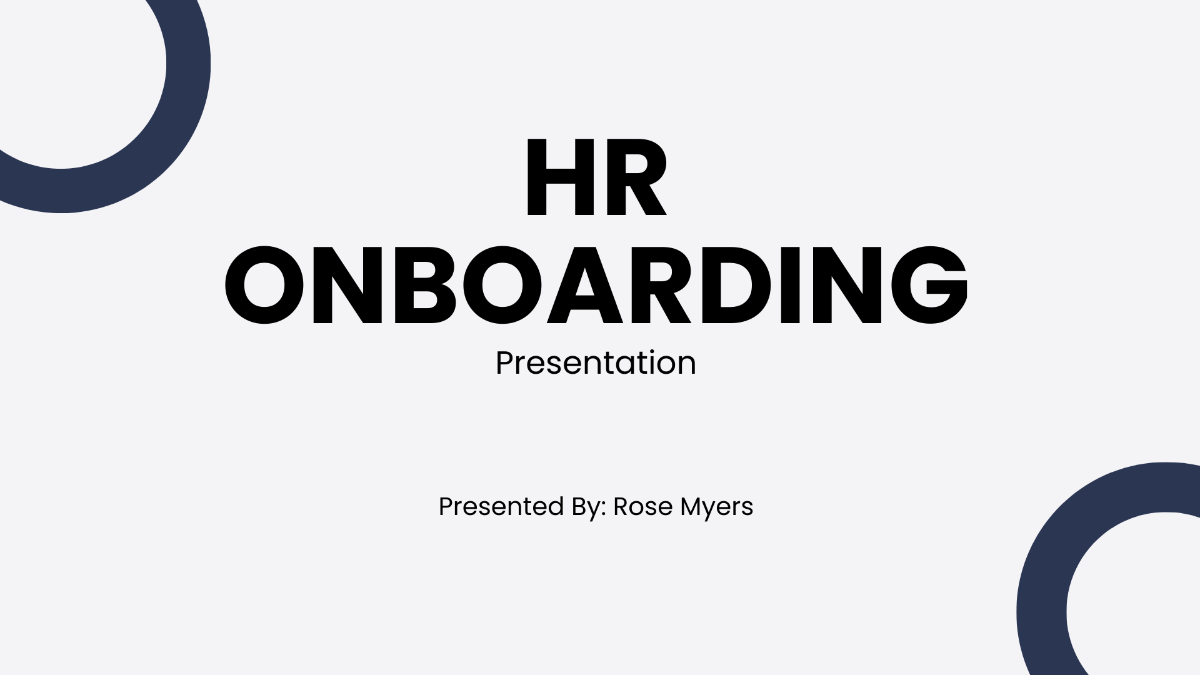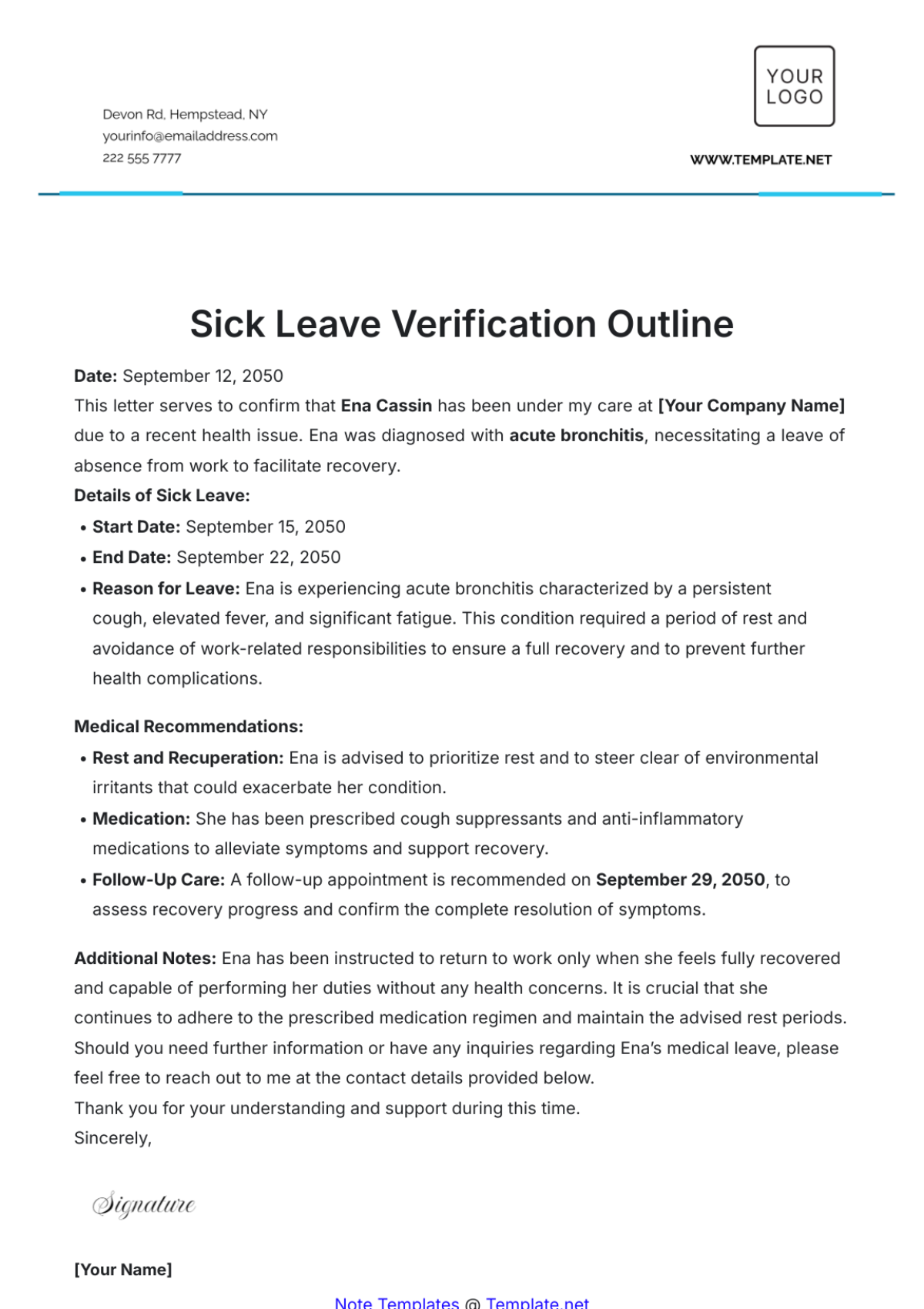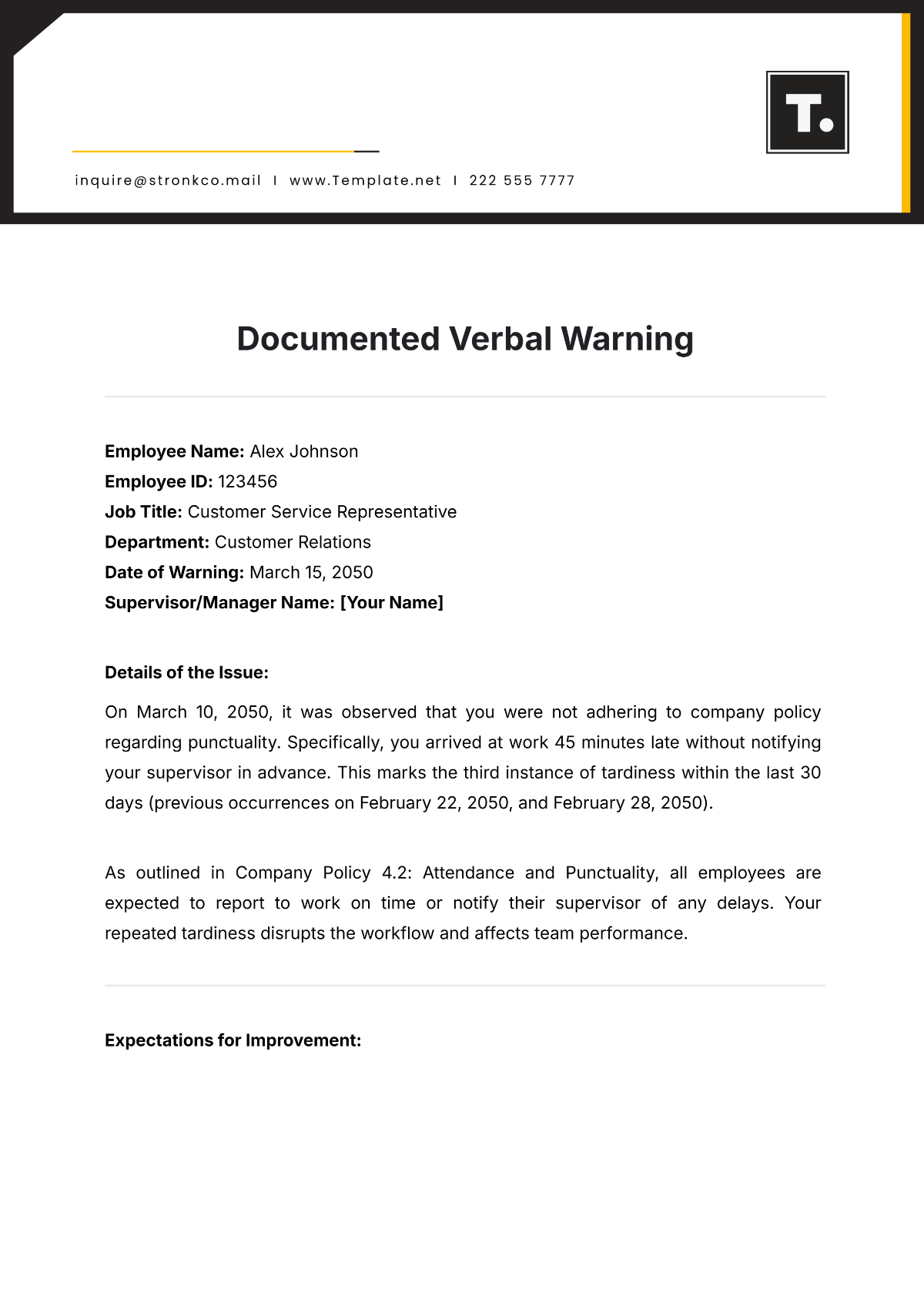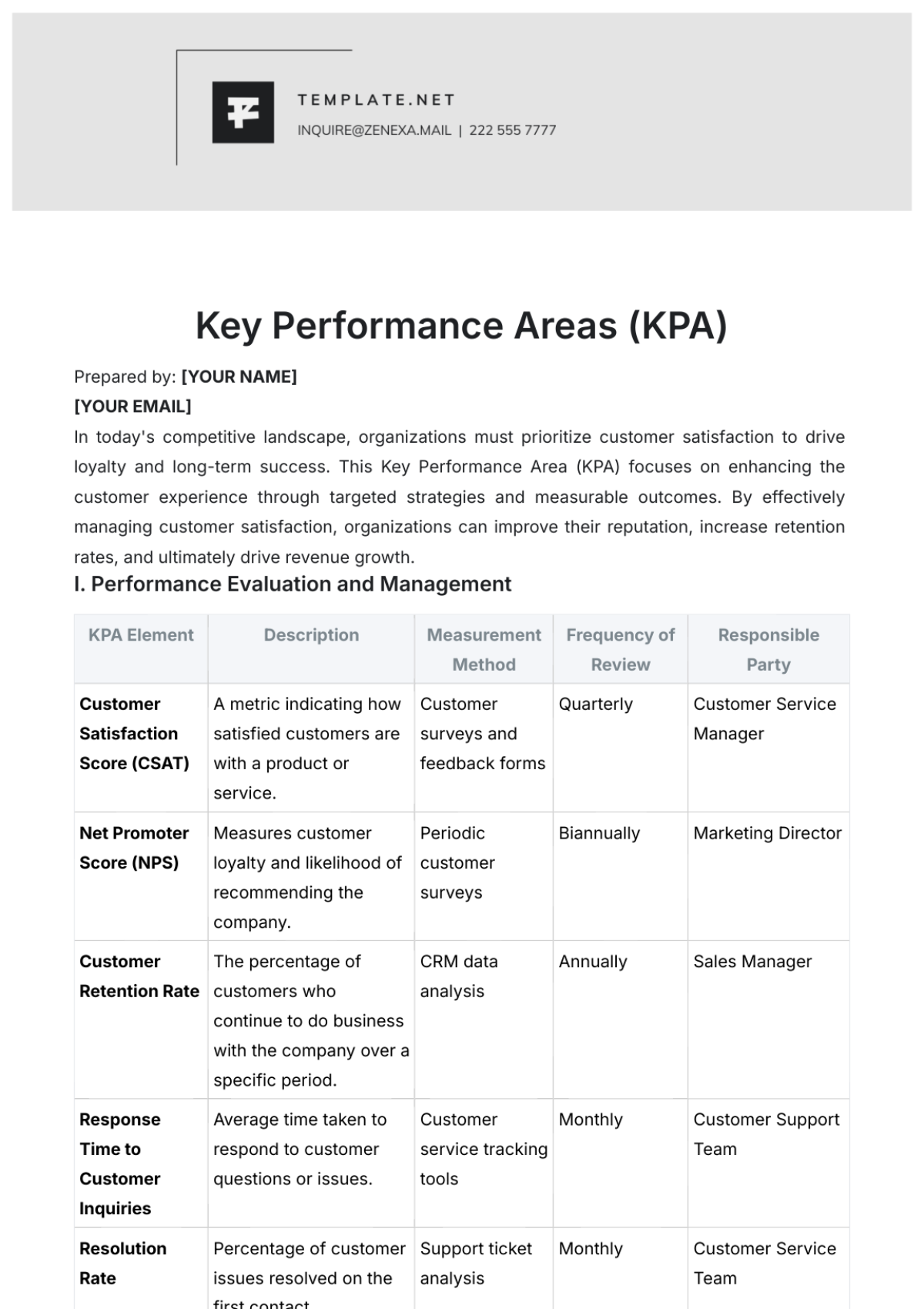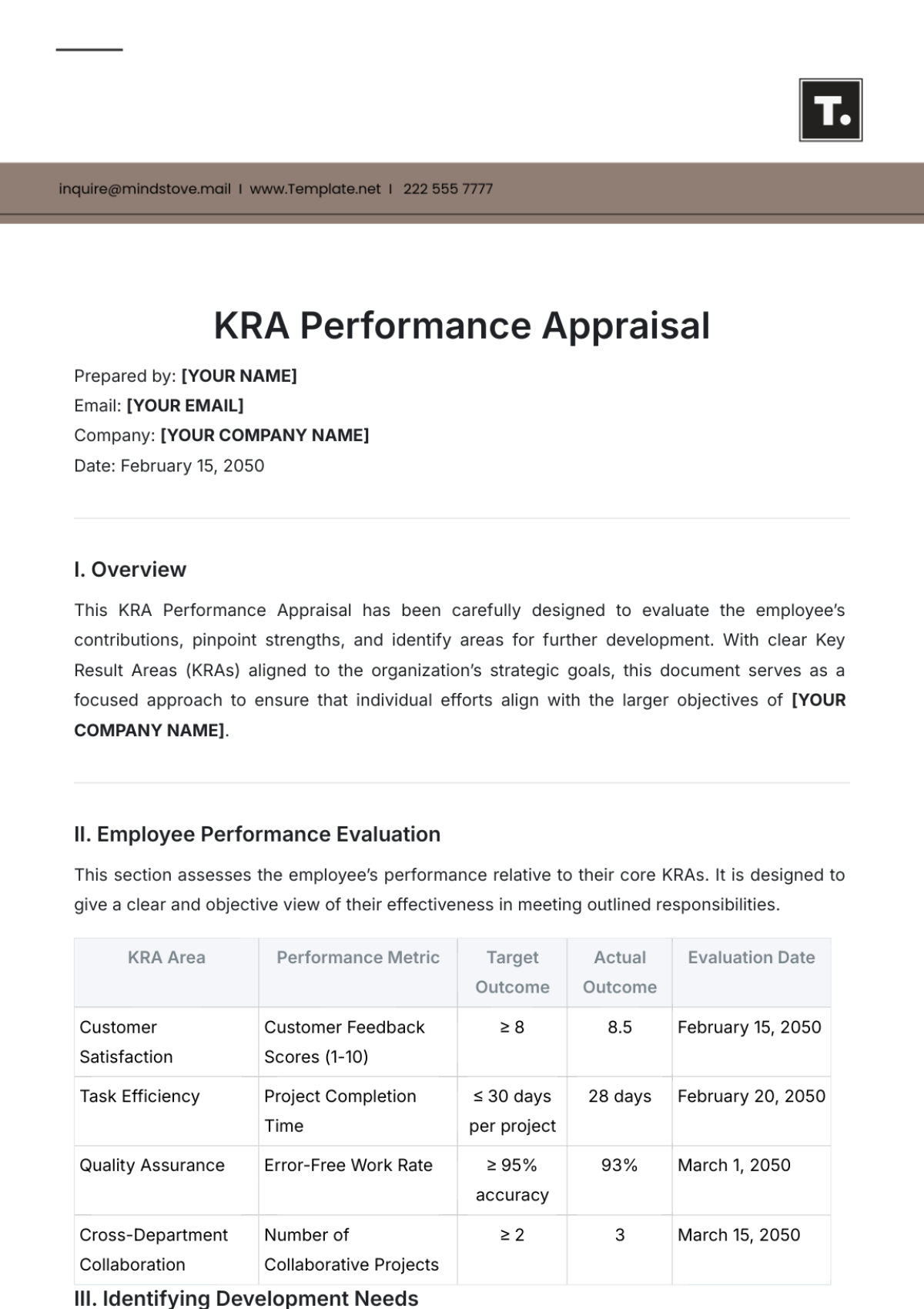HR Process Documentation
1. Introduction
1.1 Purpose of the HR Process Documentation
The purpose of this HR Process Documentation is to provide a comprehensive guide to the human resources procedures at [Your Company Name]. This document is intended to ensure consistency in HR practices, improve efficiency, and support compliance with relevant laws and regulations. It serves as a reference for HR professionals, managers, and employees, providing clarity on the processes involved in managing the company’s human resources.
1.2 Scope and Applicability
This document covers all major HR processes, including recruitment, training, performance management, compensation, employee relations, compliance, and offboarding. It is applicable to all departments within [Your Company Name] and is relevant to both current and future HR practices, with considerations extending to the year 2050 and beyond.
1.3 Document Structure
The document is structured to align with the employee lifecycle, from recruitment to exit, and includes sections on supporting processes such as compliance, metrics, and technology. Each section includes detailed procedures, responsibilities, timelines, and any associated forms or templates.
2. Recruitment and Hiring
2.1 Job Analysis and Workforce Planning
Workforce planning at [Your Company Name] begins with a thorough job analysis to determine the skills, qualifications, and experience required for each role. The HR department collaborates with department heads to forecast workforce needs, considering both current demands and future growth projections up to the year 2050. Job descriptions and specifications are regularly updated to reflect evolving business requirements and technological advancements.
2.2 Job Posting and Advertising
Job vacancies are advertised through multiple channels, including the company’s website, online job boards, and social media platforms. The choice of advertising medium depends on the role and target candidate pool. Job postings are crafted to be clear, inclusive, and reflective of the company’s brand and values. In anticipation of the year 2050, digital and AI-driven recruitment platforms are increasingly utilized to reach a global audience.
2.3 Application and Resume Screening
The HR team is responsible for the initial screening of applications and resumes. This process involves assessing candidates against the job criteria and using HR software to filter applications. Automated tools assist in managing large volumes of applications, ensuring that only qualified candidates proceed to the interview stage. Screening criteria are periodically reviewed to align with industry trends and future skill requirements.
2.4 Interview Process
Interviews at [Your Company Name] are conducted in multiple rounds, including initial phone screenings, technical assessments, and in-person or virtual interviews. The interview panel typically consists of HR representatives, hiring managers, and relevant technical experts. Behavioral and situational interview questions are employed to assess a candidate’s cultural fit and problem-solving abilities. In the year 2050, AI-driven interview analysis tools are anticipated to play a significant role in candidate evaluation.
2.5 Selection and Hiring Decision
The final selection of candidates is based on a comprehensive evaluation of their performance in interviews, assessments, and reference checks. The HR department, in collaboration with the hiring manager, makes the final hiring decision. Offers of employment are extended to successful candidates, including detailed information on compensation, benefits, and job expectations.
2.6 Onboarding Process
The onboarding process begins once a candidate accepts the job offer. It includes the completion of necessary paperwork, orientation sessions, and the assignment of a mentor or buddy. The goal is to integrate new hires into the company culture and provide them with the tools and knowledge they need to succeed in their roles. The onboarding process is continuously improved to enhance the new hire experience, with feedback collected and reviewed regularly.
3. Employee Training and Development
3.1 Training Needs Assessment
Training needs are identified through a combination of performance reviews, employee surveys, and strategic business goals. The HR department works closely with managers to determine the skills gaps within their teams and prioritize training initiatives that will have the most significant impact. By 2050, data-driven training needs assessments, utilizing predictive analytics, will be integral in identifying emerging skill requirements.
3.2 Training Program Design
Training programs are designed to address the specific needs identified during the assessment phase. This includes creating curriculum outlines, selecting instructional methods, and determining the duration and frequency of training sessions. Programs are designed to be flexible, incorporating a blend of in-person and online learning opportunities. The company’s training offerings are regularly updated to include new technologies and methodologies anticipated to be relevant in 2050.
3.3 Training Delivery
Training delivery methods at [Your Company Name] include classroom instruction, e-learning modules, workshops, and on-the-job training. Trainers are selected based on their expertise in the subject matter and their ability to engage and motivate learners. The company leverages learning management systems (LMS) to track employee progress and provide access to training materials. Virtual reality (VR) and augmented reality (AR) are expected to become increasingly common in training delivery by 2050.
3.4 Evaluation of Training Programs
The effectiveness of training programs is evaluated through pre- and post-training assessments, employee feedback, and performance metrics. The HR department uses this data to determine the return on investment (ROI) of training initiatives and to identify areas for improvement. Continuous improvement is a key focus, with regular reviews ensuring that training programs remain aligned with business objectives and technological advancements.
3.5 Continuous Development Initiatives
[Your Company Name] promotes a culture of continuous learning and development. Employees are encouraged to pursue further education, attend industry conferences, and participate in professional development opportunities. The company offers tuition reimbursement programs, access to online courses, and mentorship programs to support ongoing learning. As the business evolves towards 2050, continuous development will be critical to maintaining a competitive workforce.
4. Performance Management
4.1 Performance Planning
Performance planning at [Your Company Name] begins with setting clear, measurable objectives for each employee, aligned with the company’s strategic goals. Employees and managers collaborate to define performance expectations, key performance indicators (KPIs), and development goals. This planning process is revisited annually, with adjustments made to reflect changes in the business environment and employee career aspirations.
4.2 Performance Monitoring and Feedback
Regular performance monitoring is essential to ensure employees are on track to meet their goals. Managers conduct monthly check-ins to discuss progress, provide constructive feedback, and offer support where needed. The HR department facilitates the documentation of these interactions to ensure transparency and consistency. By 2050, AI-driven tools are expected to play a significant role in performance monitoring, providing real-time insights and feedback to employees.
4.3 Performance Appraisal
Formal performance appraisals are conducted annually, with mid-year reviews as needed. The appraisal process involves a comprehensive evaluation of an employee’s achievements, areas for improvement, and potential for future growth. The HR department provides managers with guidelines and tools to conduct fair and objective appraisals. The outcomes of appraisals inform decisions on promotions, salary adjustments, and development opportunities.
4.4 Performance Improvement Plans (PIPs)
When an employee’s performance does not meet expectations, a Performance Improvement Plan (PIP) is initiated. The PIP outlines specific areas of concern, sets clear improvement targets, and establishes a timeline for achieving these goals. The HR department, in collaboration with the employee’s manager, monitors progress and provides support throughout the process. The goal is to help the employee succeed, but if improvement is not achieved, further actions may be taken.
5. Compensation and Benefits
5.1 Compensation Structure
[Your Company Name] maintains a competitive compensation structure that reflects the skills, experience, and performance of its employees. Salaries are reviewed annually and adjusted based on market trends, inflation, and individual performance. The HR department conducts regular benchmarking studies to ensure the company remains competitive in attracting and retaining top talent. By 2050, compensation models may evolve to include innovative elements such as flexible pay structures and blockchain-based payment systems.
5.2 Benefits Administration
Employee benefits at [Your Company Name] include health insurance, retirement plans, paid time off, and wellness programs. The HR department is responsible for administering these benefits, ensuring that all employees understand their options and can make informed decisions. Benefits packages are reviewed periodically to align with employee needs and industry standards. By 2050, personalized benefits programs, tailored to individual employee preferences, are expected to become more prevalent.
5.3 Payroll Management
The payroll process is managed by the HR department in collaboration with the finance team. Payroll is processed bi-weekly, with all necessary deductions for taxes, benefits, and other withholdings. The company uses a payroll software system to automate calculations, track employee hours, and generate payslips. Regular audits are conducted to ensure accuracy and compliance with legal requirements. As the company approaches 2050, advancements in payroll technology are expected to streamline processes further, potentially incorporating AI-driven automation.
5.4 Bonus and Incentive Programs
[Your Company Name] offers various bonus and incentive programs to reward high performance and motivate employees. These programs include annual bonuses, performance-based incentives, and spot awards for exceptional contributions. The HR department designs these programs to align with company goals and ensure fairness and transparency. By 2050, incentive programs may incorporate innovative elements such as gamification and real-time performance tracking.
6. Employee Relations
6.1 Employee Engagement Programs
Employee engagement is a key focus at [Your Company Name]. The HR department implements various initiatives to foster a positive work environment, including team-building activities, recognition programs, and employee surveys. Engagement programs are designed to align with the company’s culture and values, promoting a sense of belonging and purpose among employees. As the workforce evolves towards 2050, engagement strategies will need to adapt to new expectations and work arrangements, including remote and hybrid models.
6.2 Conflict Resolution
Conflict resolution is managed through a structured process that encourages open communication and seeks to resolve issues fairly and promptly. The HR department provides training on conflict resolution techniques and offers mediation services when necessary. All conflicts are documented, and resolutions are tracked to ensure consistency. By 2050, advanced conflict resolution tools, including AI-driven mediation platforms, are expected to enhance the efficiency and effectiveness of the process.
6.3 Grievance Handling
Employees at [Your Company Name] have the right to raise grievances related to their work environment, treatment, or any other concerns. The HR department has established a formal grievance handling process, ensuring that all grievances are addressed promptly and fairly. The process includes clear timelines, documentation requirements, and escalation procedures. The HR team regularly reviews the grievance process to ensure it meets legal standards and employee expectations.
6.4 Disciplinary Procedures
Disciplinary procedures at [Your Company Name] are designed to address violations of company policies and standards. The HR department collaborates with managers to ensure that disciplinary actions are fair, consistent, and compliant with legal requirements. Disciplinary actions may range from verbal warnings to termination, depending on the severity of the violation. The HR department maintains detailed records of all disciplinary actions, ensuring transparency and accountability.
7. Compliance and Legal Considerations
7.1 Labor Law Compliance
[Your Company Name] is committed to full compliance with all applicable labor laws and regulations. The HR department regularly reviews legal requirements, updates policies, and provides training to ensure that all employees understand their rights and responsibilities. Compliance audits are conducted annually, and any identified issues are promptly addressed. By 2050, the legal landscape may evolve, requiring ongoing vigilance and adaptation to new regulations.
7.2 Data Protection and Privacy
The HR department at [Your Company Name] is responsible for safeguarding employee data and ensuring compliance with data protection laws. This includes secure storage of personal information, restricted access to sensitive data, and regular audits of data security practices. Employees are informed of their rights regarding data privacy and are required to consent to the collection and use of their data. As data privacy regulations become increasingly stringent towards 2050, the company will need to adapt its practices to maintain compliance.
7.3 Equal Employment Opportunity (EEO)
[Your Company Name] is committed to providing equal employment opportunities to all employees and applicants. The HR department ensures that hiring, promotions, and other employment decisions are made based on merit, without discrimination based on race, gender, age, disability, or any other protected characteristic. Regular training on EEO principles is provided to all employees, and any violations are addressed promptly. By 2050, the company will continue to adapt its EEO policies to reflect evolving societal norms and legal standards.
7.4 Health and Safety Regulations
Employee health and safety are top priorities at [Your Company Name]. The HR department, in collaboration with the safety officer, ensures compliance with all relevant health and safety regulations. This includes conducting regular workplace inspections, providing safety training, and maintaining records of any incidents or hazards. By 2050, advancements in technology, such as wearable safety devices and AI-driven risk assessments, are expected to enhance workplace safety measures.
8. Exit Process and Offboarding
8.1 Voluntary Resignation
When an employee decides to resign, the HR department manages the process to ensure a smooth transition. Employees are required to provide a written notice of resignation, typically two weeks in advance. The HR department conducts an exit interview to understand the reasons for the departure and gathers feedback for continuous improvement. By 2050, exit processes may become more automated, with digital tools facilitating seamless offboarding.
8.2 Involuntary Termination
In cases of involuntary termination, the HR department follows a structured process that includes documentation of performance issues, adherence to legal requirements, and communication with the employee. The goal is to handle the termination with professionalism and respect, minimizing any potential disruption to the business. The HR department ensures that all final settlements and benefits are processed promptly.
8.3 Exit Interviews
Exit interviews are conducted by the HR department to gather insights from departing employees. The feedback collected is used to identify areas for improvement in the company’s policies, management practices, and work environment. Exit interviews are confidential, and the information is used solely for the purpose of enhancing the employee experience at [Your Company Name].
8.4 Final Settlement
The final settlement process involves calculating and disbursing any outstanding payments owed to the departing employee, including salary, bonuses, unused vacation days, and any other entitlements. The HR department coordinates with the finance team to ensure that all payments are accurate and timely. Detailed records of the final settlement are maintained for future reference.
8.5 Knowledge Transfer and Documentation
Before an employee leaves, the HR department facilitates a knowledge transfer process to ensure that critical tasks and responsibilities are handed over to a successor or team members. This includes documenting procedures, sharing key contacts, and providing training as needed. The goal is to minimize the impact of the departure on the business and ensure continuity of operations.
9. HR Metrics and Reporting
9.1 Key HR Metrics
[Your Company Name] tracks a range of HR metrics to monitor the effectiveness of its human resources practices. Key metrics include employee turnover rates, time-to-fill positions, training completion rates, and employee satisfaction scores. These metrics provide valuable insights into the company’s HR performance and help identify areas for improvement.
9.2 Reporting Frequency
HR metrics are reported on a monthly, quarterly, and annual basis, depending on the nature of the metric and its relevance to business goals. The HR department prepares detailed reports that are shared with senior management, providing a comprehensive overview of the company’s human resources performance. By 2050, real-time HR dashboards and predictive analytics are expected to enhance the company’s ability to monitor and respond to HR trends.
9.3 Continuous Improvement Through Metrics
The HR department uses the insights gained from HR metrics to drive continuous improvement in its processes. Regular reviews of metrics help identify trends, uncover issues, and develop strategies for addressing them. The company is committed to using data-driven decision-making to enhance the employee experience and support business objectives.
10. Technology and HR Systems
10.1 HR Information Systems (HRIS)
[Your Company Name] uses a comprehensive HR Information System (HRIS) to manage employee data, payroll, benefits, and performance management. The HRIS is integrated with other business systems to streamline processes and improve data accuracy. The HR department is responsible for maintaining the system, ensuring data security, and providing training to users. As technology advances towards 2050, the HRIS will continue to evolve, incorporating AI, machine learning, and advanced analytics to enhance HR functions.
10.2 Employee Self-Service Portals
The company provides employees with access to a self-service portal, allowing them to view and update their personal information, access payslips, submit leave requests, and enroll in benefits programs. The self-service portal is designed to be user-friendly and accessible from any device. By 2050, self-service portals are expected to become more personalized, offering customized recommendations based on employee preferences and behavior.
10.3 Integration with Other Business Systems
The HR Information System (HRIS) at [Your Company Name] is integrated with other business systems, such as accounting, project management, and CRM platforms. This integration facilitates seamless data flow between systems, reduces redundancy, and improves overall efficiency. By integrating HRIS with other business tools, the company can ensure that HR data is consistent and up-to-date across all departments. Moving towards 2050, further integration with emerging technologies such as blockchain and decentralized data networks is anticipated to enhance transparency and security in HR operations.
10.4 Data Security and Privacy
Data security and privacy are critical concerns for [Your Company Name]. The HR department implements robust security measures to protect employee data from unauthorized access, breaches, and misuse. This includes encryption, multi-factor authentication, and regular security audits. Compliance with data protection regulations, such as GDPR and CCPA, is a top priority. As we approach 2050, advancements in data security technologies, such as quantum encryption and AI-driven threat detection, will play a crucial role in safeguarding sensitive information.
10.5 Future Trends in HR Technology
Looking ahead, the HR technology landscape is expected to undergo significant transformations. Innovations such as AI-driven recruitment tools, advanced predictive analytics, and virtual reality (VR) training programs are likely to become integral components of HR operations. These technologies will enable more efficient talent management, personalized employee experiences, and data-driven decision-making. [Your Company Name] is committed to staying at the forefront of HR technology trends to continually enhance its HR practices and support its workforce.
11. Training and Development
11.1 Training Programs
[Your Company Name] offers a range of training programs designed to enhance employees' skills and support their professional growth. Training programs include onboarding for new hires, technical skills development, leadership training, and compliance education. The HR department collaborates with department managers to identify training needs and ensure that programs align with company goals. By 2050, training programs are expected to incorporate advanced learning technologies, such as AI-based personalized learning paths and immersive VR simulations.
11.2 Professional Development
Professional development is a key component of [Your Company Name]'s employee experience. The company provides opportunities for employees to attend conferences, workshops, and seminars, and supports continuous learning through online courses and certifications. The HR department works with employees to create individualized development plans that align with their career aspirations and the company's objectives. In the future, professional development may include more dynamic and interactive learning methods, leveraging AI and machine learning to tailor experiences to individual needs.
11.3 Performance Evaluation
Performance evaluations are conducted regularly to assess employee performance, provide feedback, and set goals for future development. The HR department uses a structured evaluation process that includes self-assessments, peer reviews, and manager evaluations. The feedback gathered is used to guide career development and inform compensation decisions. By 2050, performance evaluations may incorporate advanced data analytics and AI-driven insights to provide more comprehensive and accurate assessments of employee performance.
11.4 Career Pathing
Career pathing is an essential part of [Your Company Name]'s talent management strategy. The HR department works with employees to map out potential career paths within the company, providing guidance and support to help them achieve their career goals. This includes identifying skills and experiences required for advancement, offering mentorship programs, and facilitating internal job transfers. As the workforce evolves, career pathing may become more dynamic, with a greater emphasis on personalized development plans and flexible career trajectories.
12. Diversity and Inclusion
12.1 Diversity Initiatives
[Your Company Name] is committed to fostering a diverse and inclusive workplace. The HR department implements initiatives to promote diversity in hiring, create an inclusive work environment, and support underrepresented groups. This includes diversity training, employee resource groups, and partnerships with organizations that support diversity and inclusion. By 2050, diversity initiatives are expected to evolve to address emerging challenges and opportunities, including global diversity considerations and the integration of AI in promoting inclusivity.
12.2 Inclusion Practices
Inclusion practices at [Your Company Name] focus on creating an environment where all employees feel valued and respected. The HR department promotes inclusive behaviors and practices through training programs, policies, and employee engagement activities. Regular assessments of the company’s inclusivity efforts are conducted to ensure that the workplace culture supports diversity and fosters a sense of belonging for all employees. As societal norms shift towards 2050, inclusion practices will need to adapt to new perspectives and expectations.
12.3 Accessibility
Accessibility is a key focus for [Your Company Name]. The HR department ensures that the workplace and company systems are accessible to all employees, including those with disabilities. This includes physical accommodations, such as accessible workspaces, as well as digital accessibility for online resources and communications. By 2050, advancements in technology are expected to further enhance accessibility, providing new tools and solutions to support employees with diverse needs.
12.4 Cultural Competence
Cultural competence is an important aspect of [Your Company Name]'s diversity and inclusion efforts. The HR department provides training and resources to help employees understand and respect different cultures, perspectives, and traditions. This includes promoting cultural awareness through events, workshops, and educational materials. As the global workforce becomes more diverse, cultural competence will continue to play a crucial role in fostering a positive and collaborative work environment.
13. Employee Wellbeing
13.1 Health and Wellness Programs
[Your Company Name] is dedicated to supporting the health and wellbeing of its employees. The HR department offers a variety of wellness programs, including fitness classes, mental health resources, and wellness challenges. These programs are designed to promote a healthy work-life balance and support employees' physical and mental health. By 2050, wellbeing programs are expected to incorporate innovative technologies, such as personalized health tracking and virtual wellness coaching.
13.2 Work-Life Balance
Work-life balance is a priority at [Your Company Name]. The company provides flexible work arrangements, such as remote work options and flexible hours, to help employees manage their personal and professional responsibilities. The HR department works with managers to ensure that employees have the support they need to achieve a healthy balance. As work arrangements continue to evolve towards 2050, the company will adapt its policies to meet the changing needs of the workforce.
13.3 Stress Management
Managing stress is an important aspect of employee wellbeing. [Your Company Name] offers resources and programs to help employees cope with stress, including stress management workshops, counseling services, and relaxation techniques. The HR department provides support and encourages employees to take advantage of these resources to maintain their wellbeing. By 2050, stress management solutions may include advanced technologies, such as AI-driven stress detection and personalized coping strategies.
13.4 Employee Assistance Programs (EAP)
Employee Assistance Programs (EAP) at [Your Company Name] provide confidential support to employees facing personal or professional challenges. The HR department coordinates with EAP providers to offer counseling, financial advice, and other resources to help employees navigate difficult situations. The EAP is designed to support overall wellbeing and promote a positive work environment. As the company approaches 2050, EAP services may expand to include new types of support, such as virtual counseling and AI-driven resources.
14. Organizational Development
14.1 Change Management
Change management is a critical function within [Your Company Name]. The HR department plays a key role in guiding the organization through periods of change, including restructuring, mergers, and new initiatives. This involves developing change management plans, communicating with employees, and providing support to ensure a smooth transition. By 2050, change management practices are expected to incorporate advanced tools and methodologies, such as AI-driven change simulations and predictive analytics.
14.2 Leadership Development
Leadership development is essential for the growth and success of [Your Company Name]. The HR department provides programs and resources to develop current and future leaders, including leadership training, coaching, and mentoring. These programs are designed to enhance leadership skills, align with company goals, and prepare leaders for future challenges. As leadership development evolves towards 2050, new approaches such as AI-driven leadership assessments and virtual reality training are expected to play a significant role.
14.3 Organizational Culture
Organizational culture is a core component of [Your Company Name]'s success. The HR department works to cultivate a positive and productive culture that reflects the company’s values and mission. This includes promoting cultural initiatives, recognizing achievements, and fostering open communication. By 2050, the concept of organizational culture may continue to evolve, with a greater emphasis on creating inclusive, adaptive, and tech-savvy workplace environments.
14.4 Succession Planning
Succession planning ensures that [Your Company Name] has a pipeline of talent ready to fill key roles as they become available. The HR department develops and maintains succession plans for critical positions, identifying potential internal candidates and providing development opportunities to prepare them for future roles. By 2050, succession planning may incorporate advanced tools such as AI-driven talent mapping and predictive analytics to identify and develop future leaders.
15. HR Policies and Procedures
15.1 Policy Development
The HR department at [Your Company Name] is responsible for developing and updating HR policies and procedures. This includes creating policies that align with legal requirements, company values, and best practices. Policies are reviewed regularly to ensure they remain relevant and effective. By 2050, policy development may involve incorporating new trends and technologies, such as AI-driven policy analysis and automated compliance monitoring.
15.2 Policy Communication
Effective communication of HR policies is essential for ensuring that employees understand their rights and responsibilities. The HR department uses various channels to communicate policies, including employee handbooks, intranet updates, and training sessions. Clear and accessible communication helps to ensure that all employees are informed and compliant with company policies. As technology advances, communication methods may evolve to include more interactive and engaging formats.
15.3 Policy Enforcement
Enforcing HR policies is a key responsibility of the HR department. This involves monitoring compliance, addressing policy violations, and taking corrective actions when necessary. The HR department ensures that policies are applied consistently and fairly across the organization. By 2050, policy enforcement may incorporate advanced technologies, such as AI-driven monitoring systems and real-time compliance tracking.
15.4 Policy Review and Update
Regular review and updating of HR policies are essential to ensure that they remain effective and relevant. The HR department conducts periodic reviews of policies and procedures, incorporating feedback from employees and staying informed about changes in laws and regulations. Updated policies are communicated to employees to ensure ongoing compliance. As we approach 2050, the process of policy review and update may become more streamlined with the use of AI and other advanced technologies.
16. Conclusion
16.1 Summary of Key Points
The HR department at [Your Company Name] plays a crucial role in managing various aspects of the employee lifecycle, from recruitment and onboarding to performance management and employee wellbeing. The department is committed to implementing best practices, leveraging technology, and fostering a positive work environment. Looking towards 2050, the HR function will continue to evolve, incorporating new technologies and approaches to meet the changing needs of the workforce and support the company's strategic goals.
16.2 Future Outlook
As [Your Company Name] moves forward, the HR department will focus on adapting to emerging trends and technologies to enhance its operations and support the company's growth. This includes embracing innovations in HR technology, promoting diversity and inclusion, and developing new approaches to talent management. The future of HR is expected to be characterized by greater integration of technology, increased emphasis on employee experience, and a continued commitment to creating a positive and inclusive workplace.
16.3 Recommendations
To ensure continued success and relevance in the evolving HR landscape, [Your Company Name] should consider the following recommendations:
Invest in advanced HR technologies and tools to enhance efficiency and decision-making.
Prioritize diversity and inclusion initiatives to create a more inclusive and equitable workplace.
Develop and implement comprehensive training and development programs to support employee growth and career advancement.
Regularly review and update HR policies to ensure they remain effective and compliant with evolving regulations.
Foster a culture of continuous improvement and adaptability to stay ahead of industry trends and challenges.
By following these recommendations, [Your Company Name] can position itself for long-term success and maintain a competitive edge in the evolving HR landscape.
